“If you fail to plan, you are planning to fail.”
Benjamin Franklin
Old Ben was a pretty savvy businessman, starting the most popular newspaper of his day at the ripe old age of 23.
And in a day when many business owners worked right up to the bitter end, Franklin was wealthy enough to retire at 43 – precisely 20 years after he started. All before that famous kite thing came along (Ben’s kite thing, not our company).
It’s a good bet he never failed to plan.
And it’s also a good bet that if you don’t have a brilliant brand strategy behind your business, you’re planning to fail.
Your brand strategy is a plan for reaching your business’s long term goals — the big picture, if you will — for where you want your brand to go and how you want it to grow. It’s how you’ll get from Point A today to a future Point B.
Every successful brand, whether shiny new or trusty veteran, needs a solid brand strategy to make sure they’re moving in the right direction, toward the right outcomes.
We’re going to look at the five elements of a strong brand strategy and how they all fit together to guide and grow your business.
Ready? Let’s make old Ben proud.
While we’re not very fond of rules here at Red Kite, when it comes to creating your brand strategy, there are a few guidelines to follow. These will make sure you build a strong and unique brand.
Now that we have those guidelines out of the way, let’s look at the moving parts of a brand strategy and what they do.

The four elements of your brand’s definition characterise who you are, what you want, why you do it, and how. And since it’s internal, it’s for you and your people (all your people, not just marketing).
Yes, we know; you want to make money. Other than that, though, why do you do what you do? What’s the justification for your company?
What do you see when you look ahead 2, 5, or 10 years? How much do you want to grow? Does it include adding a new product line or service offering? Think long term. Think someday. And remember, be bold and risky. Fly your kite in that storm.
No, this is not your mission statement, although having one of those greatly helps in the overall scheme of things. This mission, should you choose to accept it, is the steps you will take daily, weekly, monthly, to reach that vision you just defined.
What really matters? What values, ethics, and principles matter most to you as a brand?
As you can imagine, figuring all of this out brings clarity to your brand strategy. It inspires everyone on your team and gives them the strong foundation they need to see your brand strategy succeed.
Knowing who you serve and who you’re up against for their business is vital to your brand strategy.
Remember: branding strategy depends on knowing who is out there just as much as knowing who you are inside.
There are three questions you should ask yourself:
Specifically defining both your customers and potential customers guides nearly all of your marketing efforts.
You not only need to know who they are but how they are doing. What do they excel at? What do they fail at?
You can often defeat them by merely doing well at whatever it is they don’t.
Again, knowing your competitors helps with your marketing strategy and your overall brand strategy.
Lastly, you need to know your market. What gaps are there? What can you do differently or additionally to help fill them? Meeting an unfilled need is often the secret to success.
If creating an internal brand definition clarifies everything for everyone inside, determining these elements gives you some vital specific information about what’s going on outside your business.
This portion of creating a brand strategy can be fun. Here’s how:
Think of your brand as a person.
New brand on the block, or old and wise? What kind of clothes do you wear? What sort of things do you like to do? Are you a morning person or a night owl?
Cat person or dog lover? City or country? Thai takeaway or pizza?
Who’s your favourite band or singer? What do you sing in the shower?
Your brand persona is the human face you put on your brand.
Who do you want to be? What voice is singing your song?
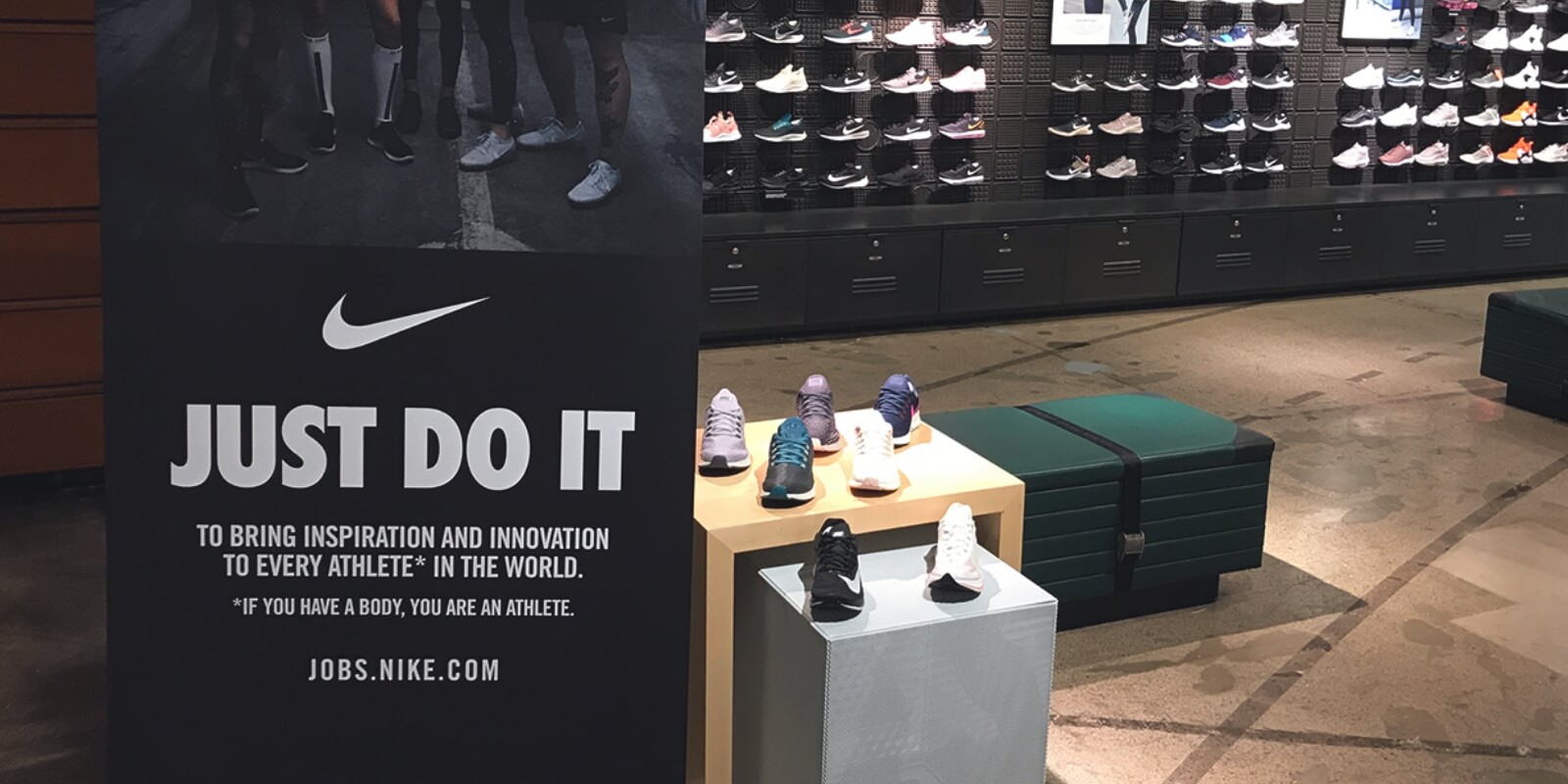
Speaking of voice, what are you saying to your crowd?
Your brand’s messages, your story and how you tell it, are almost as important to your customers and potential customers as your marketing visuals. Messaging is a vital part of any strategy. Brand stories and brand voices encourage engagement and conversation with your customer.
They can also create customer loyalty. Your people make those emotional attachments through your story. Those attachments become bonds that they are loath to break, creating a crowd of loyal, raving fans.
Everything from your keywords for search engines to your tagline and motto to your brand name sends a marketing message about your brand.
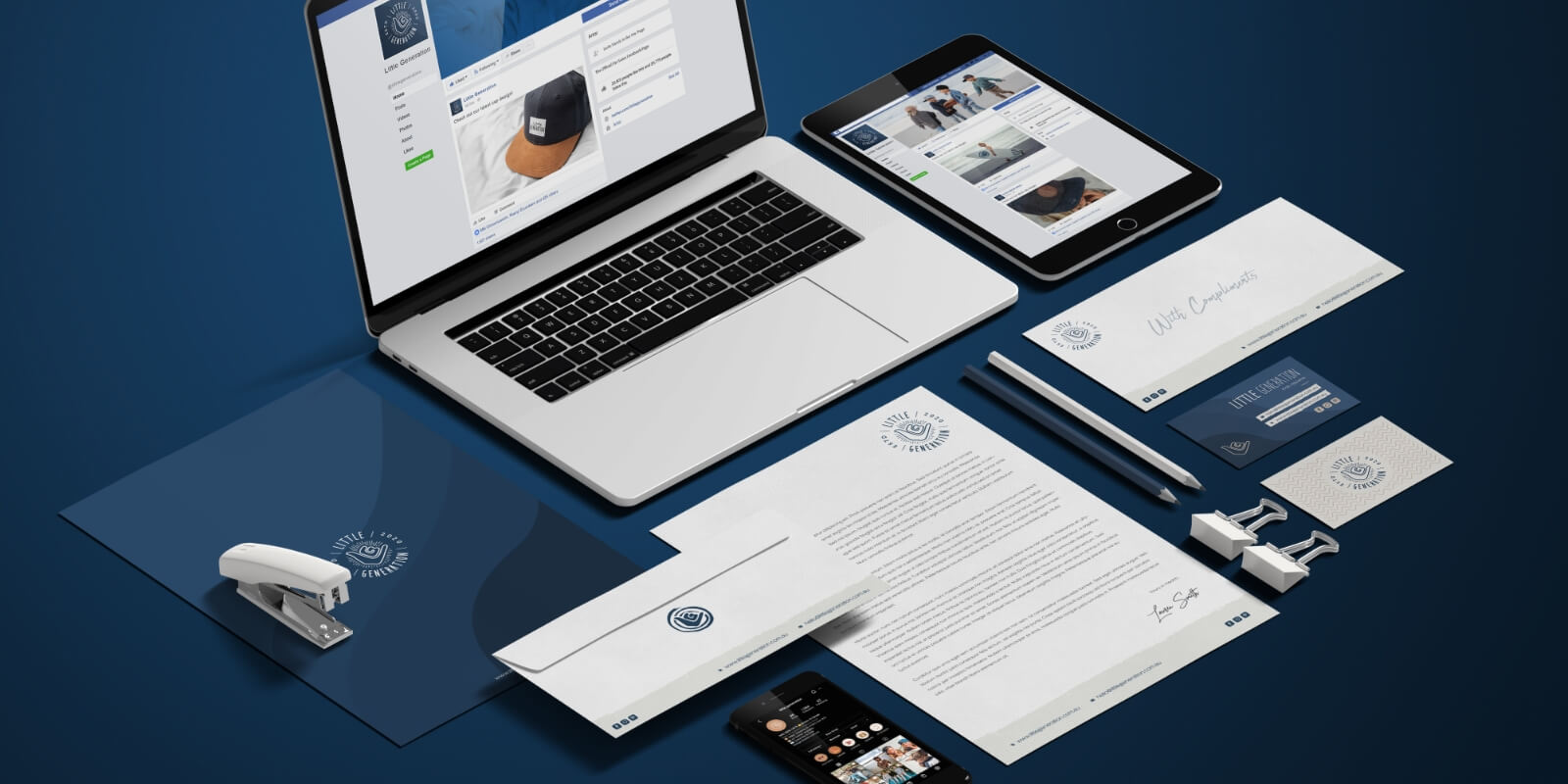
Even more critical than the messages you send are the signals you use to send them. Your branding strategy would be a colourless, nearly lifeless form without them. Messaging engages. Visuals attract.
You have to catch their eye before you can strike up a conversation.
And there are so many ways to catch their eye that you can use in your strategy. Brand strategic visuals include:
These are the elements that make you instantly recognisable and stand out from the crowd. Your marketing and your brand strategy would be nearly pointless without them.
And that’s where we come in.

Here at Red Kite, we flourish on brand identity and brand design. We hold a workshop with every new client at the beginning of their project just to gather all this vital information. We use it internally to guide our design team’s decisions.
We then create a brand style guide, which you can use to keep all current and future branding consistent. It’s your roadmap to your brand’s future. Your plan to keep failure away.
Contact us today to set up your first project. Ben would be thrilled.
Have you ever Googled a company's website and wondered if you arrived at the right place? The landing page has wrong colours, a weird-looking font, and the logo is back-to-front.
Sounds like you’ve arrived at a website that’s not followed a style guide.
If your company doesn’t have a style guide, you may be part of the problem.
A style guide serves as a company compass. It enables businesses to maintain consistency both internally and externally.
Creating a memorable brand identity doesn’t happen overnight.
However, Red Kite’s got you covered when it comes to style. We’re about to explain what a style guide is and why you need one.
But that’s only the tip of the iceberg. We also offer services from logo creation to full identity design and brand strategy.
A style guide — aka brand guide — is a document that clearly states the distinctive features of a brand.
Every company has a unique style to accompany its values and mission.
If you are just starting your company, consistency is easy to achieve. The likelihood is, you only have a couple of employees who deal with marketing.
Think ahead.
Your company is growing by leaps and bounds, and your brand is in the foreground. You have to stay recognizable to your audience. This requires consistency across all of your products and services.
But, with 500 hundred employees, how do you achieve consistency?
If only there was a place where all the brand elements could coexist happily.
Enter a style guide.

Before we get into detail on all the style guide components, there are two important things you need to adhere to when creating your guide.
Remember: A style guide is often passed on to people outside of the business, so the style guide needs to be easy to use, too. Especially for people who know nothing about the business they’re working with.
Now, here is what to keep in mind when you design your style guide.
Format refers to the way your brand’s style guide is delivered and how it’s laid out. Let’s explore.
Everyone should have easy access to the style guide.
If your entire team is working in one place, it’s a good idea to have a printed version in the office.
If your team comprises people who work in an office and remotely — freelancers, remote employees or partners — it’s best to have an online style guide format. This makes it accessible and easy to share.
There are infinite layout options for style guides.
Here are some desktop publishing software options you can choose from. These have grids and guides to help you out.
Pay attention to the page layout. You want to achieve consistency and have a clear hierarchy. To establish this, use your existing style.
For example, you can use the header your company places on their letterheads. Also, put the company name on every page.
Take charge of your narrative, whether your content is published on social media, web, print, or mobile.
To achieve editorial success:
Style guides don’t have to be cut and dry. Let your brand’s personality shine through.
You want all of your employees to be familiar with the brand’s story, so put it at the start of your style guide.
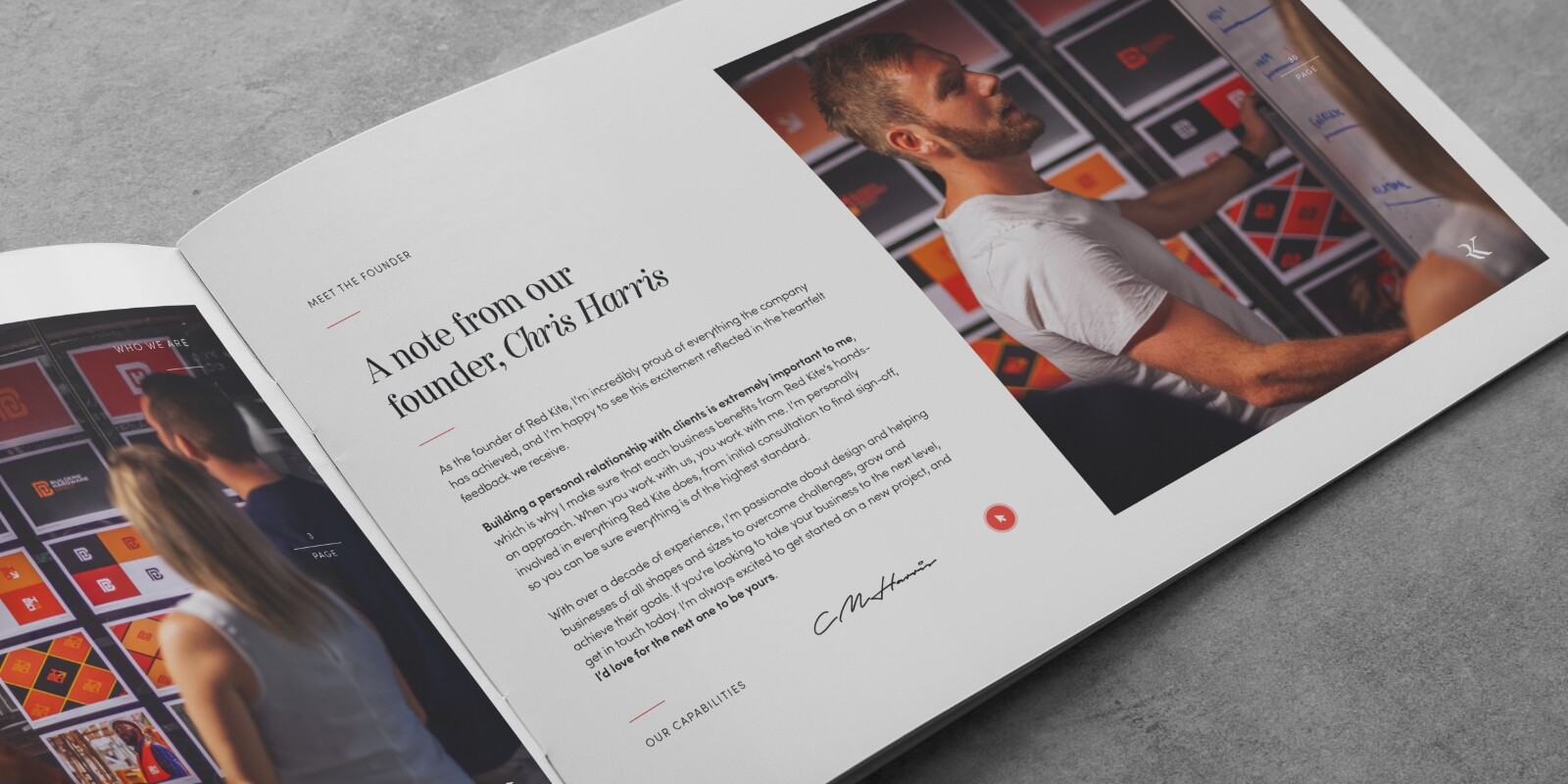
Together with the brand’s story, you can include the company’s:
Include enough information so people reading the style guide have a basic sense of the culture and the style of the brand.
We’re sure you know the feeling of going into Starbucks and ordering your favourite brew. You turn the cup around and see that your name is completely butchered.
This is also how people feel if their logo is messed with.
If there are too many logo variations, it will lead to brand disorganization and a weaker identity. Include your primary logo and all variations of the logo that are acceptable — as pictured below.
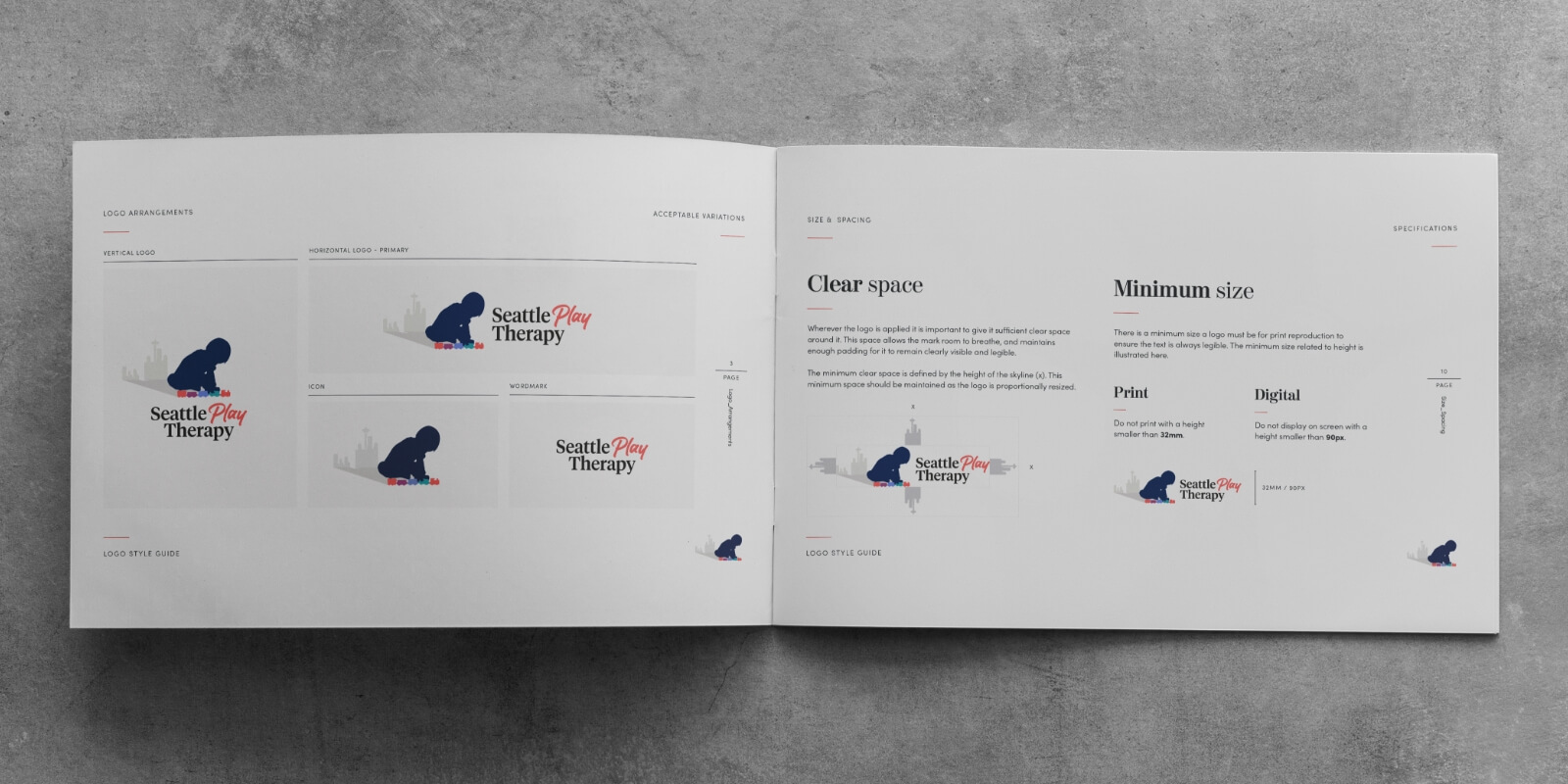
It’s also a good idea to include all logo changes that are not acceptable. The more information you include, the fewer opportunities you leave for mistakes.
The next section should deal with colours. The same rule applies here — be as detailed as possible.
Saying your brand’s colour is purple is not enough.
In case you don’t have core colours, it’s time to come up with them. It’s a good idea to learn about colour psychology. Brands usually choose up to four colours.
You should display the colour in this section and include:
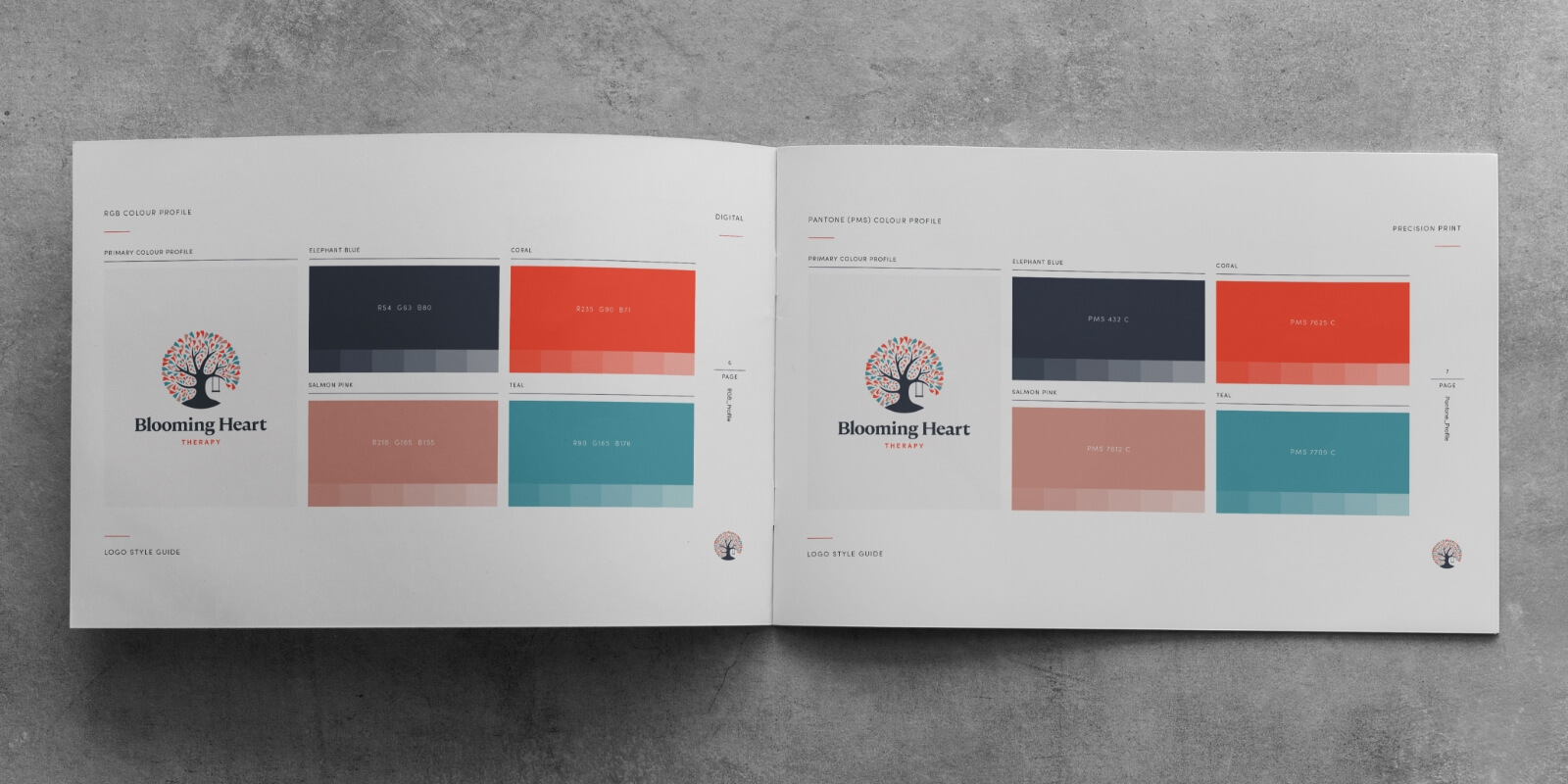
Typography is as important for brand identification as colour palette, so include it in your brand manual of style.
Check if there is a reason the typeface your company uses was chosen. If the answer is yes, include this information in the company’s backstory.
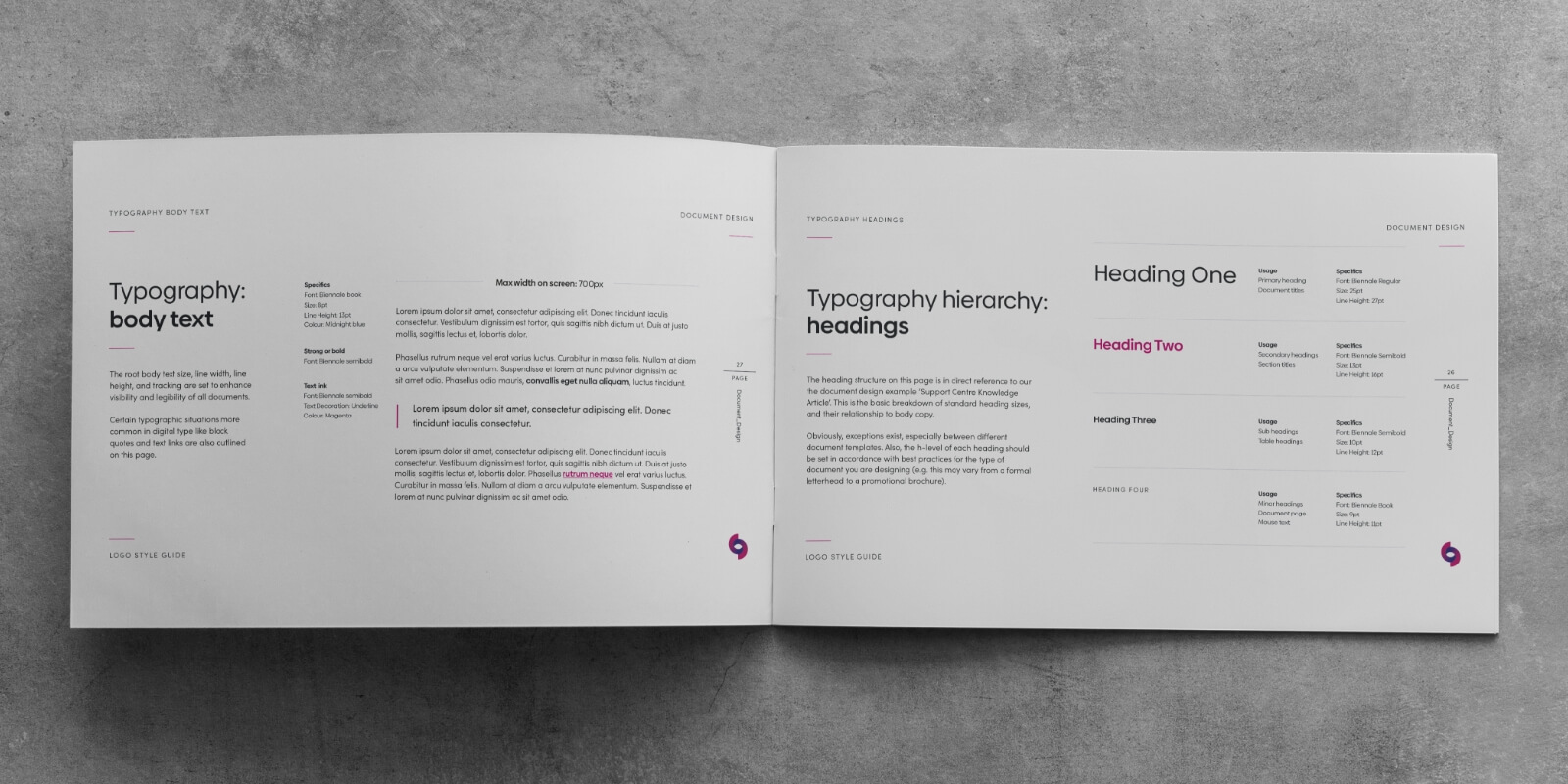
Specify which fonts should be used for:
Your brand may use a particular typeface or font pairing.
In the font section, specify the text alignment rules. For example, should headers be aligned to the centre, should body text be left or justified, etc.
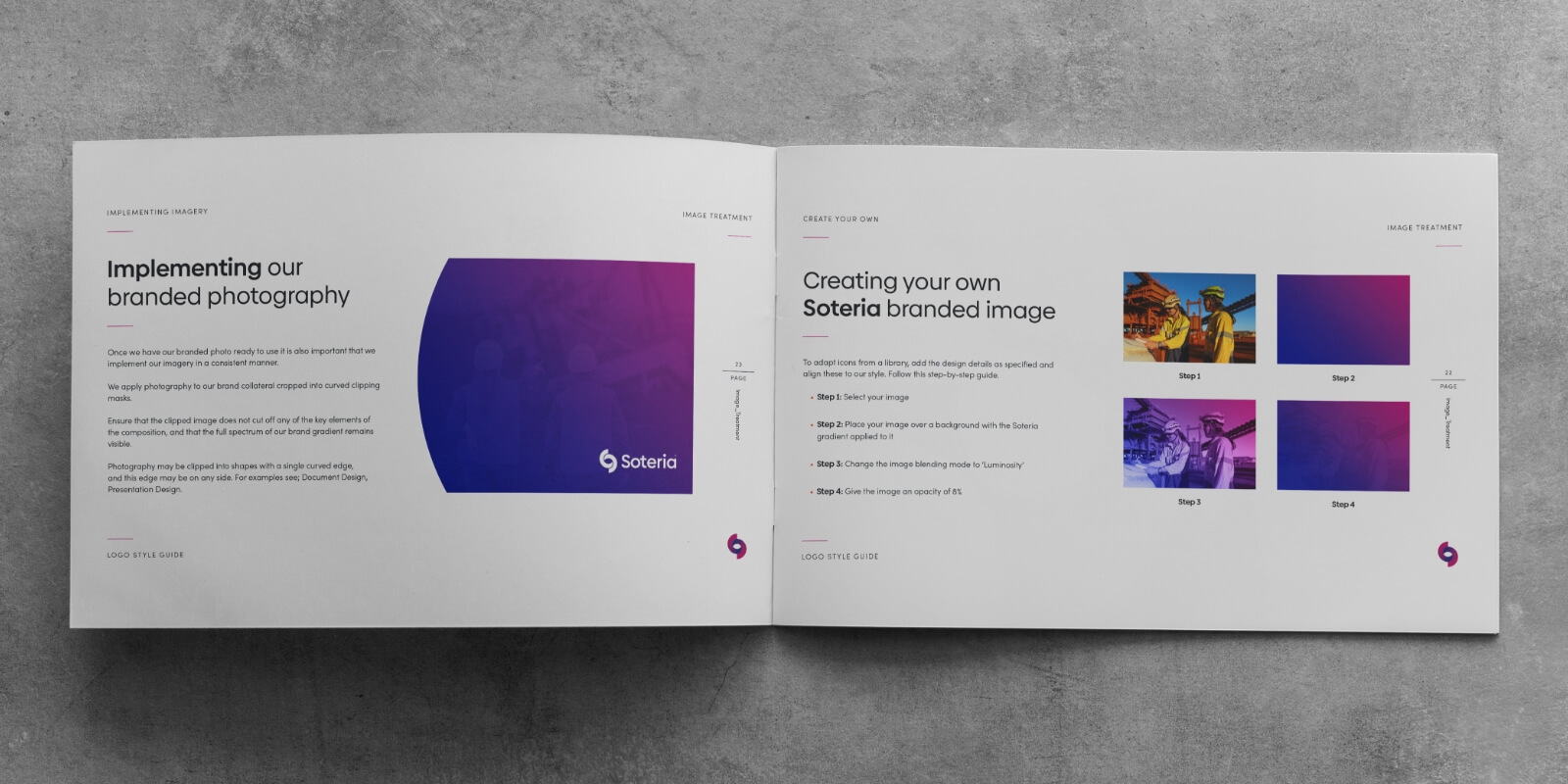
In the photography section, provide everything your employees need to know about choosing photos that suit your brand’s mood.
You can make a page that resembles a mood board. Include all the important elements that should be consistent in every photo. These can include lighting and colours.
If you already have brand photographs, include a few as examples. This will make it clear to employees what kind of photograph styles to go for.
You can even require the use of specific camera equipment or settings, to make sure all photos are cohesive.
Here you can also show how the photos should be laid out.
As a photo substitute, you can use hand-drawn illustrations. These will make your company stand out. Customers will have a more personalized experience than if you use stock photographs.
Not to mention, illustrations will make you stand out and be noticed on social media.
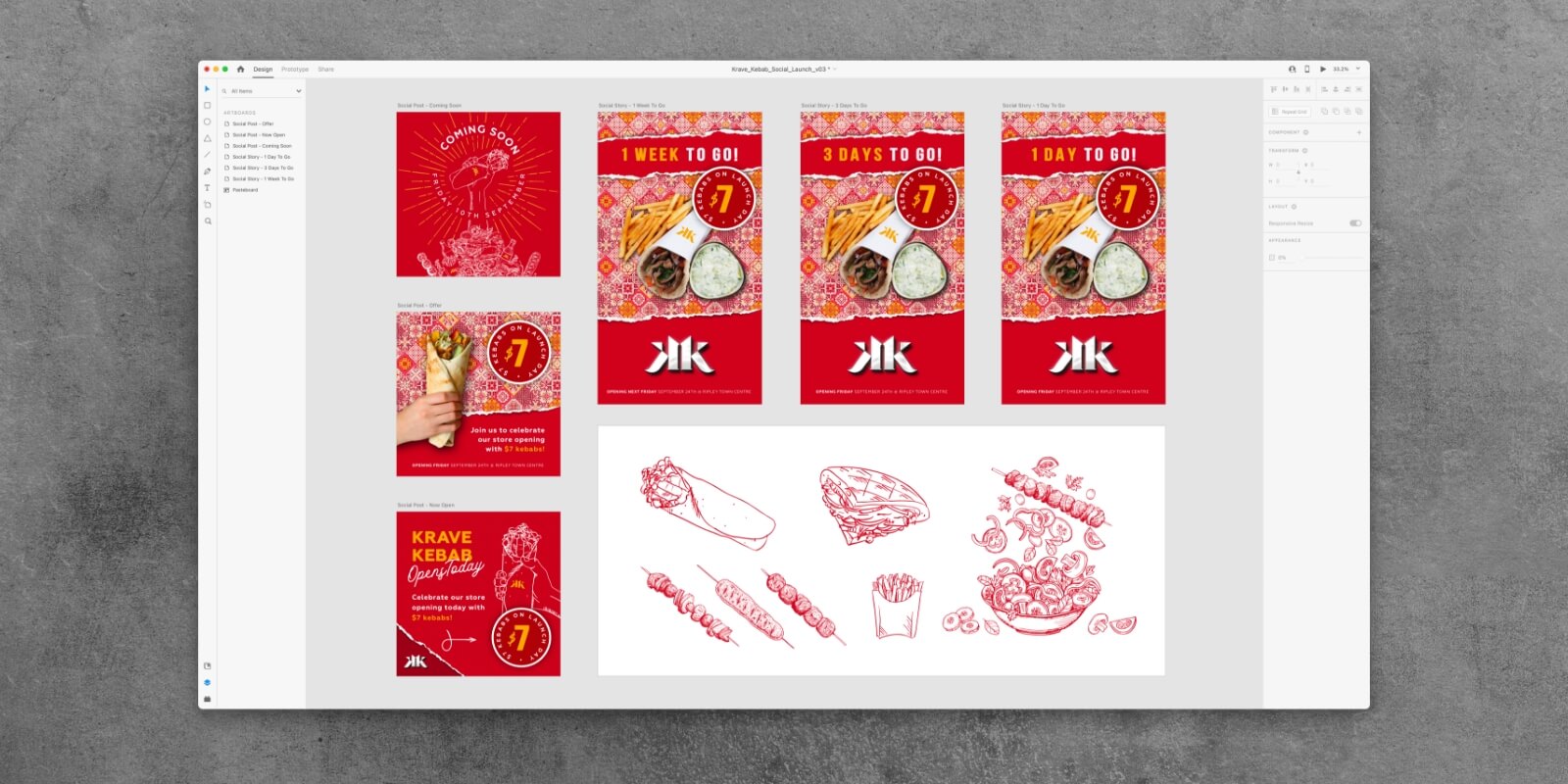
Don’t forget to include any illustrations and background elements your company uses for marketing in the style guide.
Give examples and explain how illustrations and graphics have to be used.
If you have an online location where all illustrations are stored, include it here so employees can find it easily.
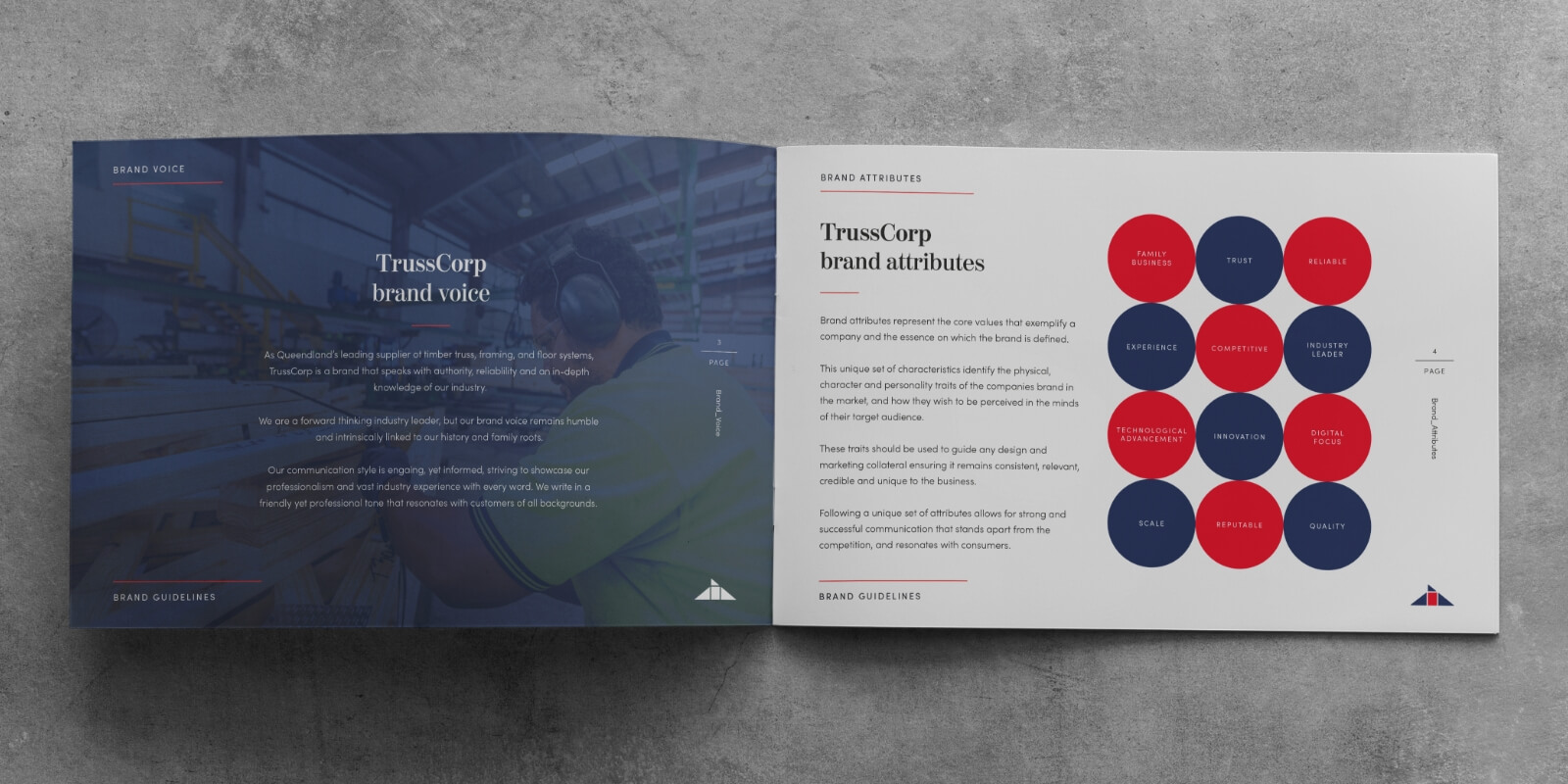
The unique voice is what makes a brand really stand out.
For example, what is your customer communication like? Do you use a formal or casual approach?
Here, you can include adjectives or phrases for employees to use when communicating with customers. If there are phrases that your company prefers over others, list them. You can create a do’s and don’ts sections with examples.
To inspire you, we’ve included 2 excellent examples of style guides.
Nasa is famous for its design due to a few iconic points, such as the vertical title text. This evokes the image of shuttles before being launched.
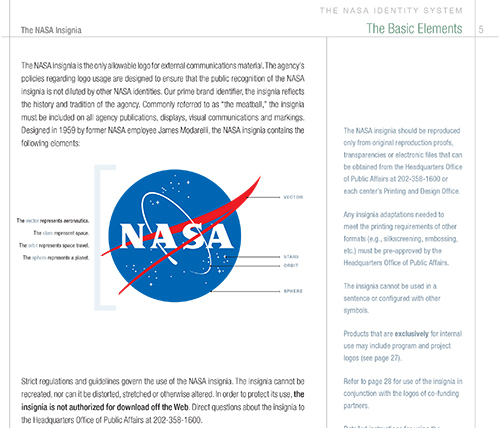
Their style guide is 220 pages long and includes:
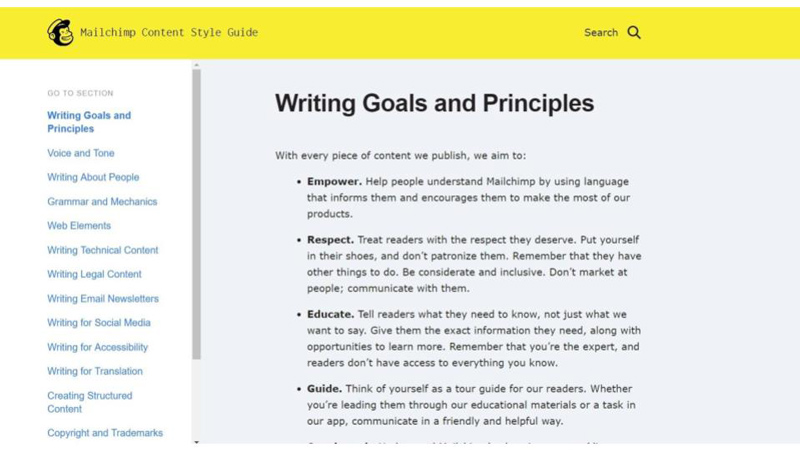
MailChimp is a great example of a style guide where every single aspect is explained. These include:
It’s easy to navigate because they included a bookmark section.
For more inspiration, check out these 14 style guides.
Think of your style guides as a lighthouse that leads everyone in the company to smooth sailing.
The clearer the rules, the less room for error.
If you don’t want to deal with all of this on your own, come to Red Kite. We’re here to listen and help you sort out any difficulties you have with your style guide.
Not only that, but we can create everything you need for your brand to shine — from logos to identity design.
Check out our blog for useful advice on defining your brand identity and growing your business with a tailored brand strategy.
The key to having a memorable brand is consistency.
You pop to your local grocery store for your favourite coffee or chocolate. You’ve learned to recognize your favourite products on the shelves from a mile away, even when they are surrounded by hundreds of other items.
Why?
Because the best brands are continuously easy for us to identify due to the coherent, clever and consistent design of their brand identities.
Repeated use of colours, fonts, patterns, logos, images, icons and shapes make up their visual identities. As well as consistent messaging, tone of voice and communication style in their brand personality.
We’ve rounded up the 13 best brand style guides to inspire you on your design journey.
And if you’re after a helping hand in the creation of your brand, don't hesitate to talk with us.
Not only will we create a memorable logo for your business, but we can design a complete brand strategy and identity. We have everything you need to put your business on the map.
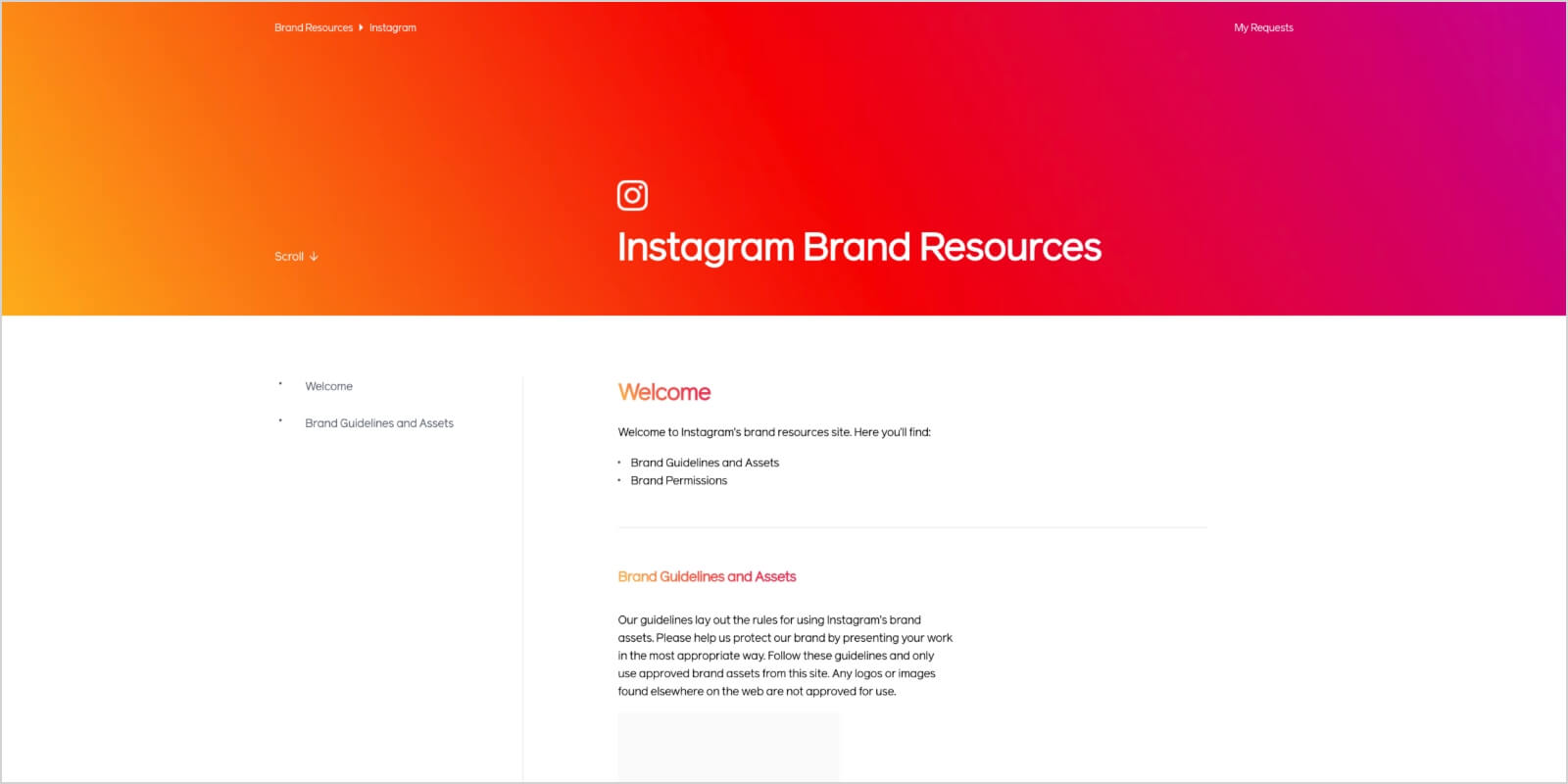
Instagram does a superb job of enabling anyone to insert this social media giant into their own business.
They do this by providing templates for:
They make sure the formatting is the same, no matter which device their styles are used on. They even give detailed instructions on when and how to position the glyph icon and talk about the importance of white space.
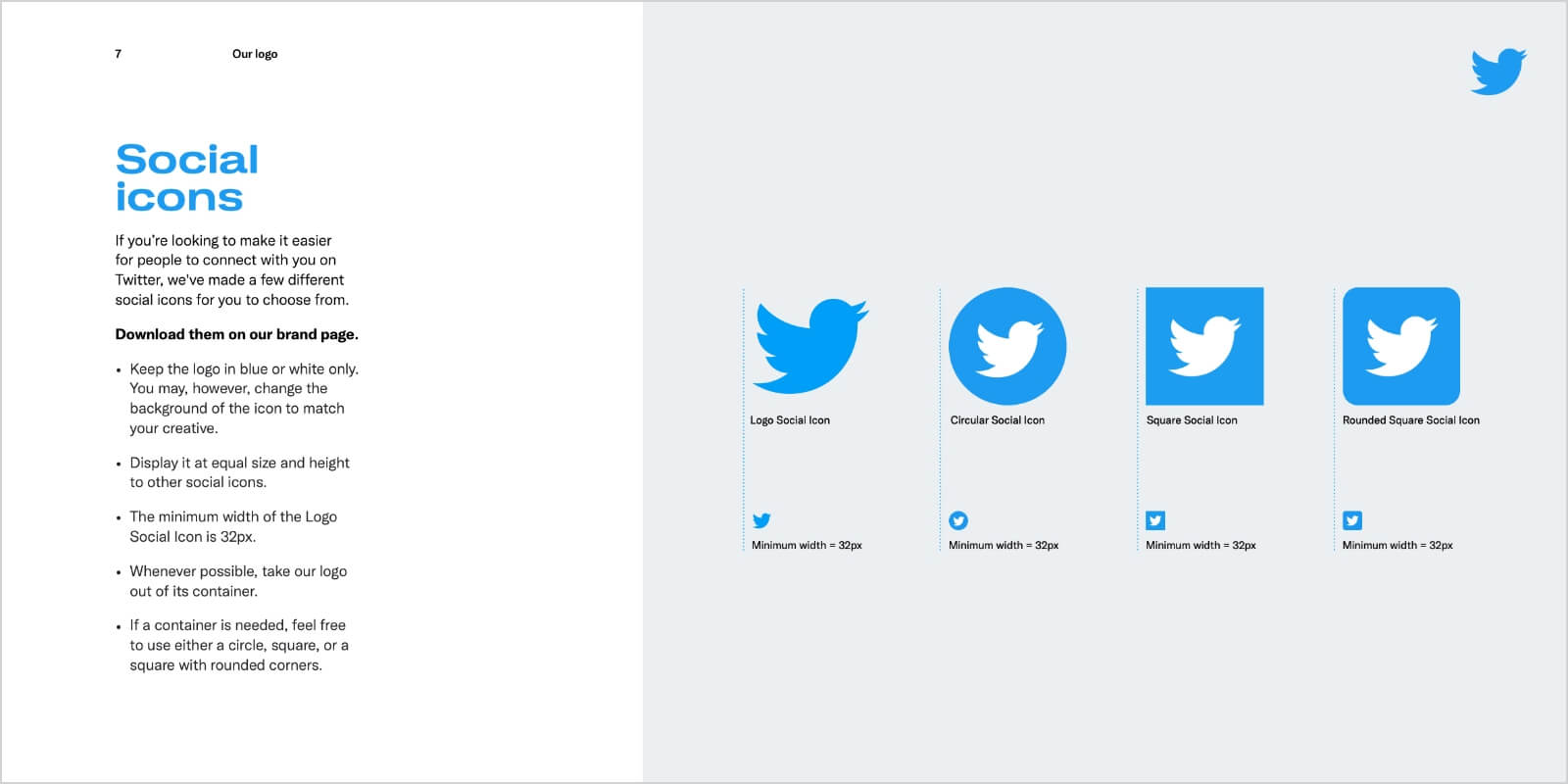
Like Instagram, Twitter exists in the digital world — so a digital guide makes perfect sense.
Why does Twitter make its own brand style guide so accessible?
Because brands use Twitter icons to market their businesses. By making its rules accessible, Twitter:
When you go to their branding resources page, you can find:
All of these resources make the guide simple and clear.
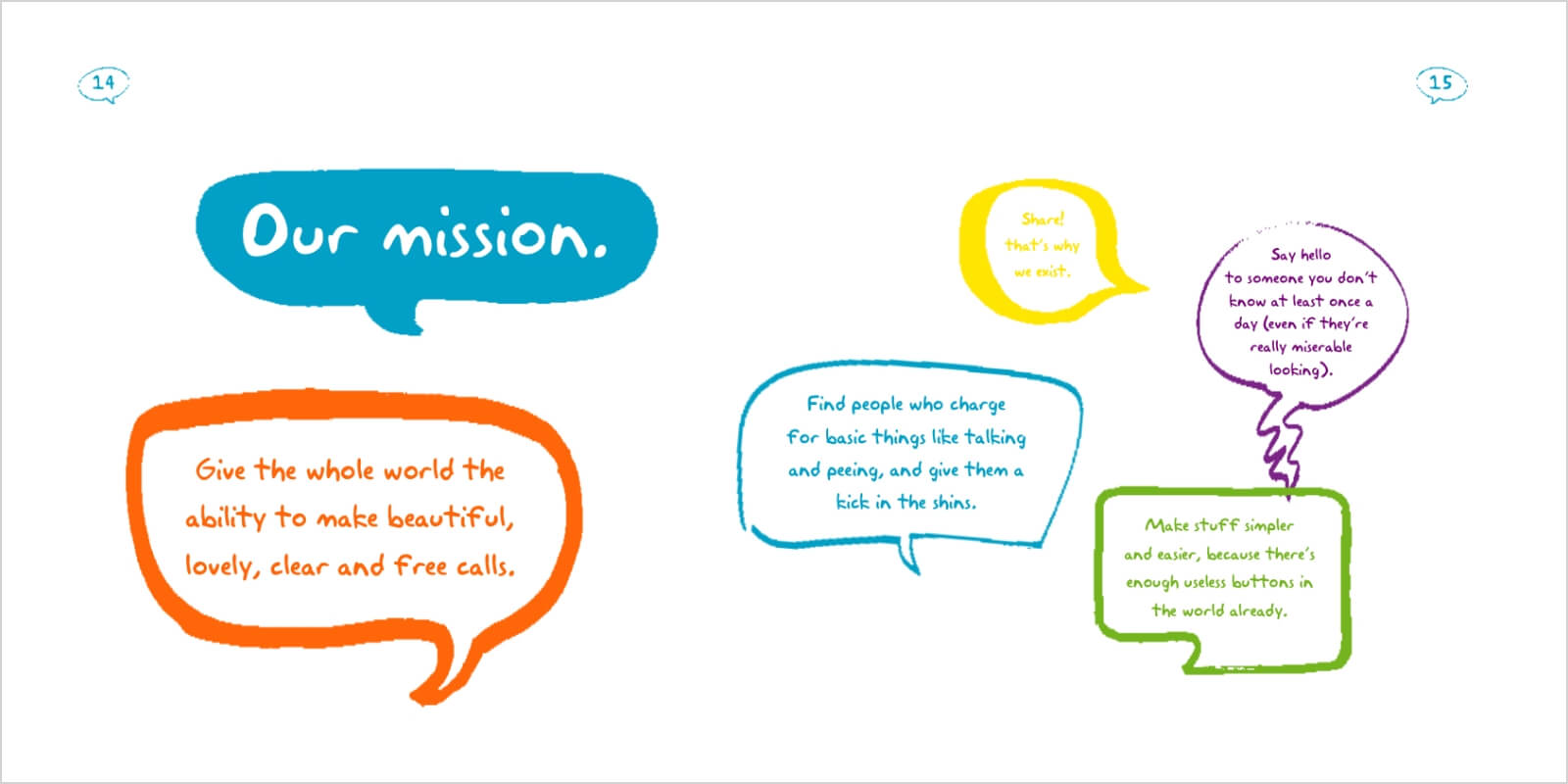
Skype has one of the most gratifying guides out there.
Often, these guides are dry and heavy. Not the case with Skype. Their guide is clear, concise, and at the same time, engaging and friendly. It resembles the way the platform is used — as a conversation.
Their brand style guide is 33 pages long. Some might think this could be condensed.
However, the spacing is what delivers such an impact. They make sure that every area of brand identity is covered. Although colourful, the guide is not overpowering. They found the perfect balance between white space and the number of graphics used.
It’s easy to skim and keep up with their rules — which even include instructions on how to draw the famous cloud.
You can find their brand book here. It mostly focuses on product phrasing and logo placement.
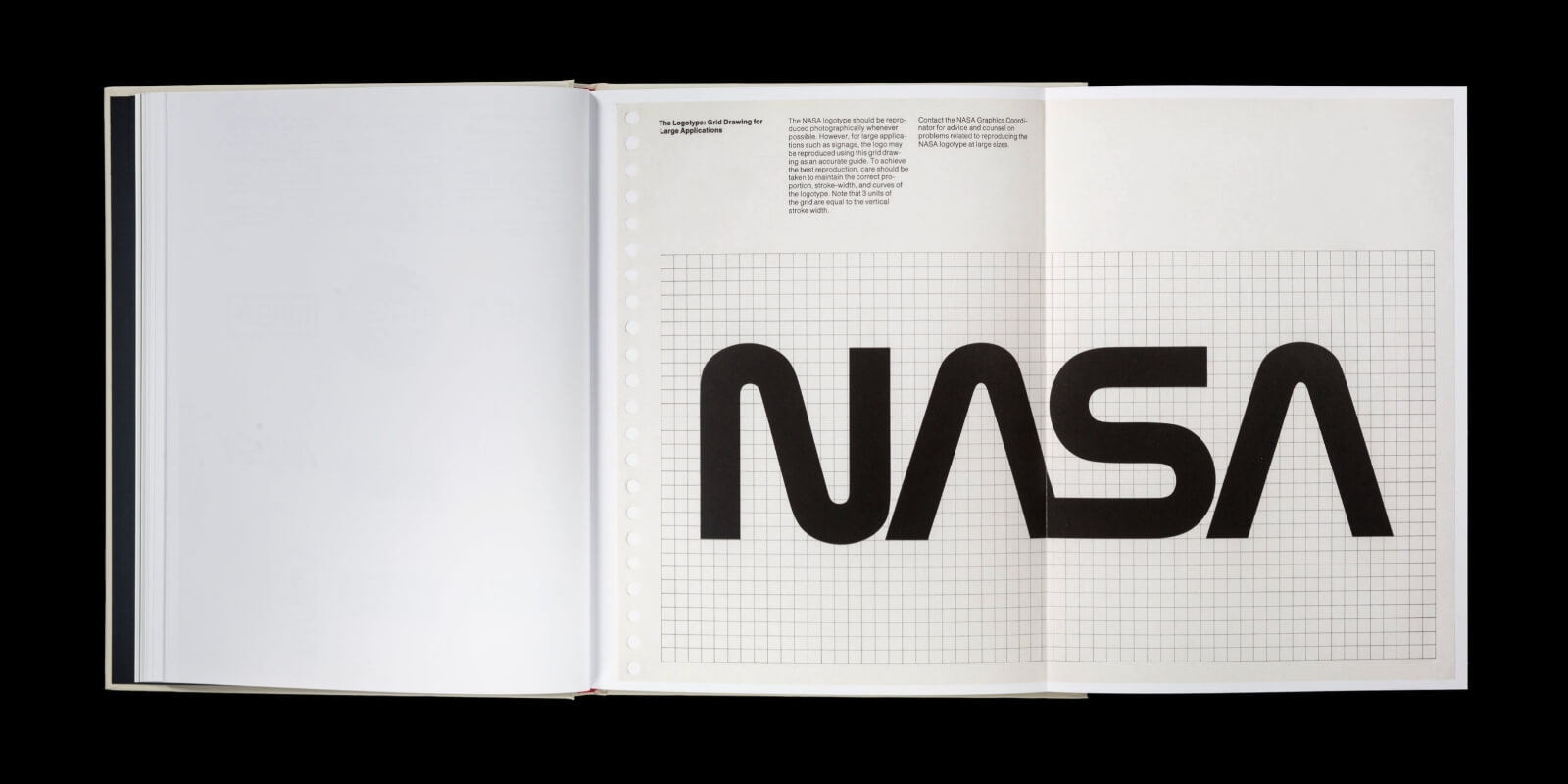
The award for one of the most complex style guides out there goes to NASA.
Their 220-page guide covers everything:
And, let’s not forget NASA space shuttles. They have their own branding rules.
Nasa wants to ensure their brand stays recognizable. This is why the style guide has exact rules for “the meatball” — the official nickname of the red, white and blue circular logo.
The guide even includes rules on where the logo can be placed on government vehicles, including planes — always toward the back, with NASA written on the door.
The style guide itself says: “It is our prime brand identifier, reflecting the history and tradition of the agency.”
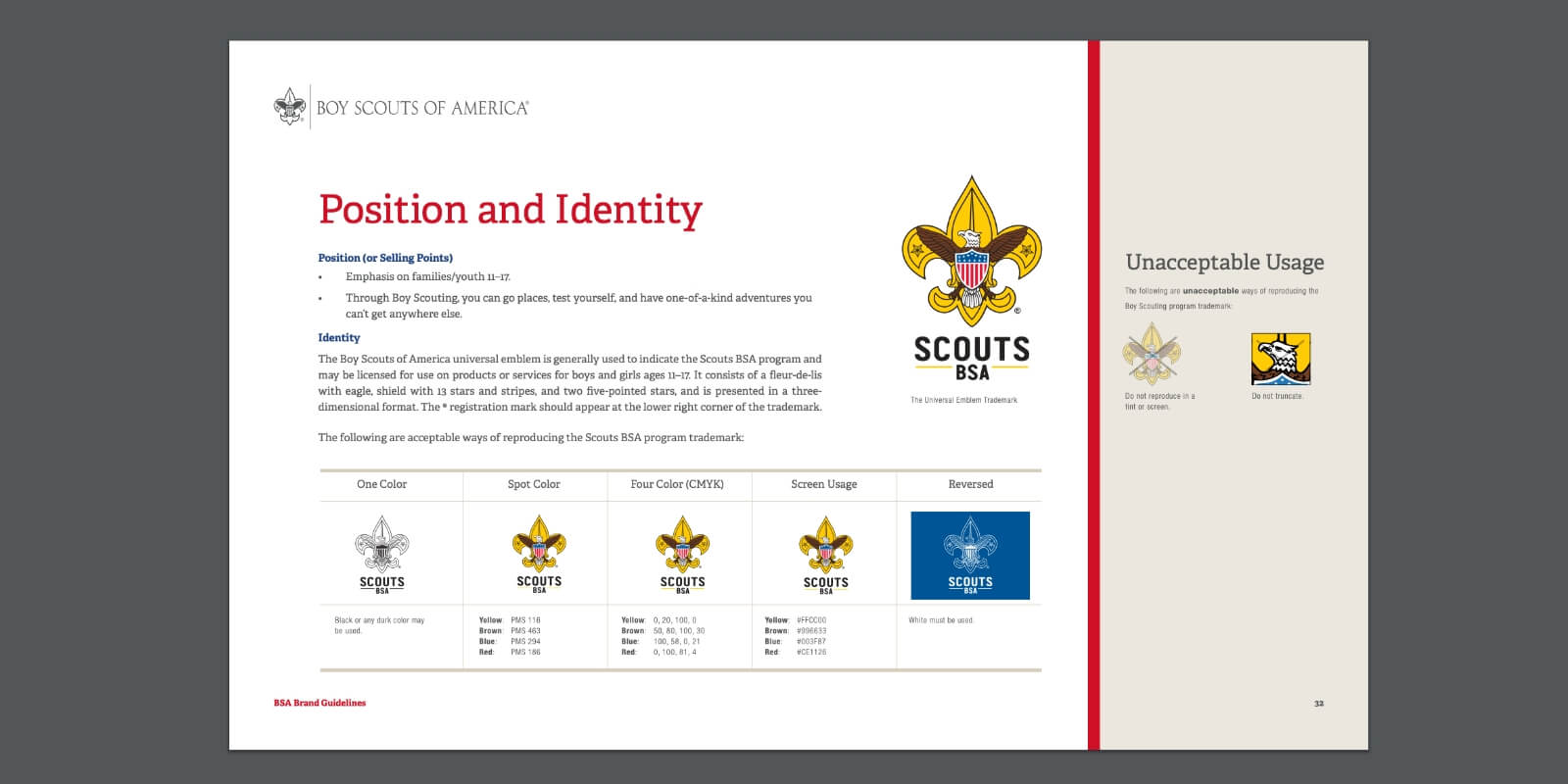
Boy Scouts of America (BSA) are based in small communities, which means that funds are limited.
In order to help parents and Boy Scout’s leaders maintain consistency, they’ve developed an excellent style guide to demonstrate appropriate logo usage. BSA go a step further and explain the proper use of patches, as well as the correct way to wear uniforms.
This guide is jam-packed with valuable information, such as:
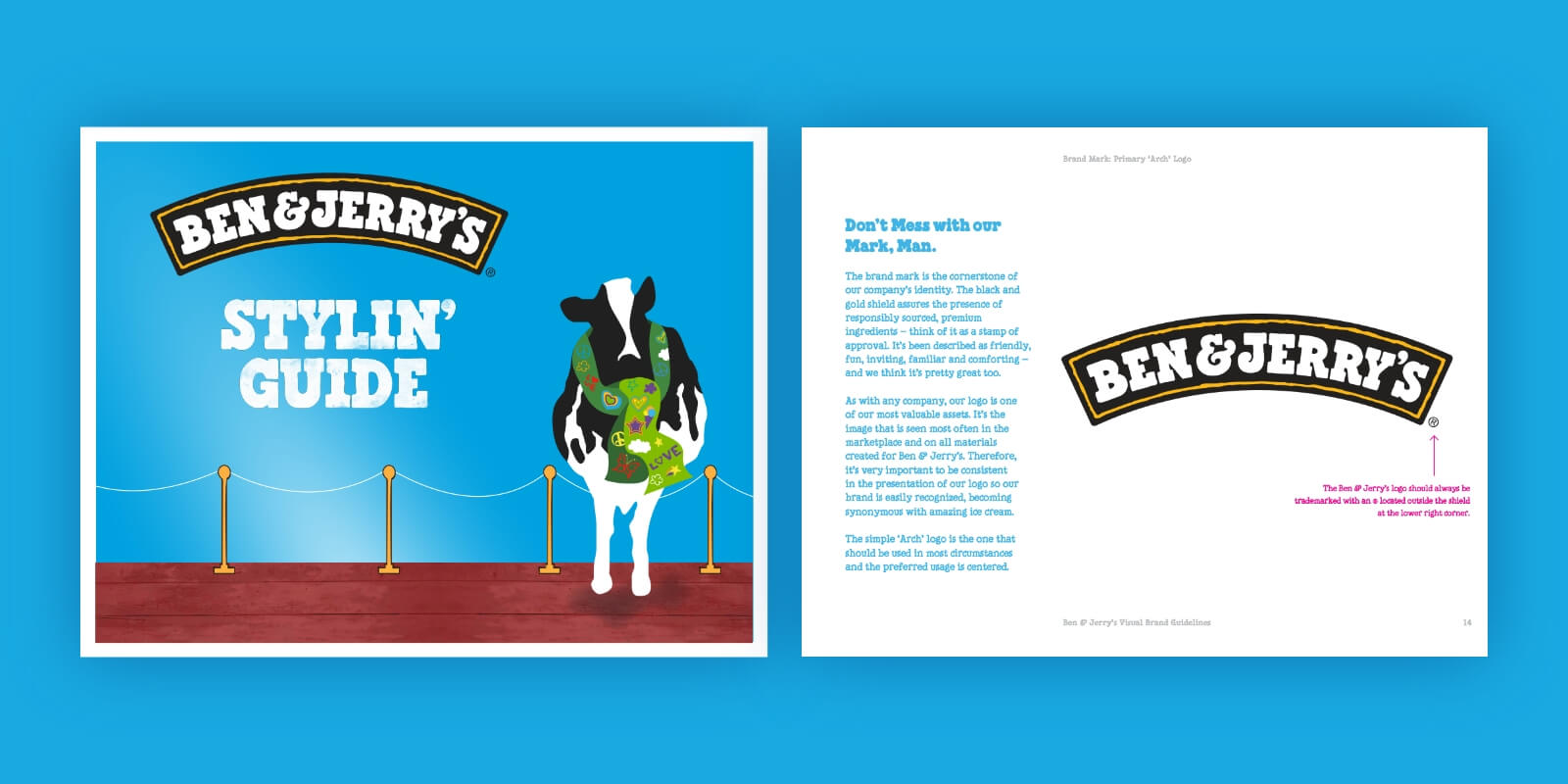
Ben & Jerry’s is a great example of brand consistency. No matter the flavour, the logo colour palette stays the same. This makes it instantly recognizable.
This is a company that mirrors its brand assets into a brand style guide.
They leave no stone left unturned. Everything is explained in detail, including:
They provide examples and full markups so that embedding on web pages is easy.
Their guide is engaging, fun and easy to follow. It works great on touchscreen devices where the icons are revealed when clicked on.
For an interview with the guide creators, go here.
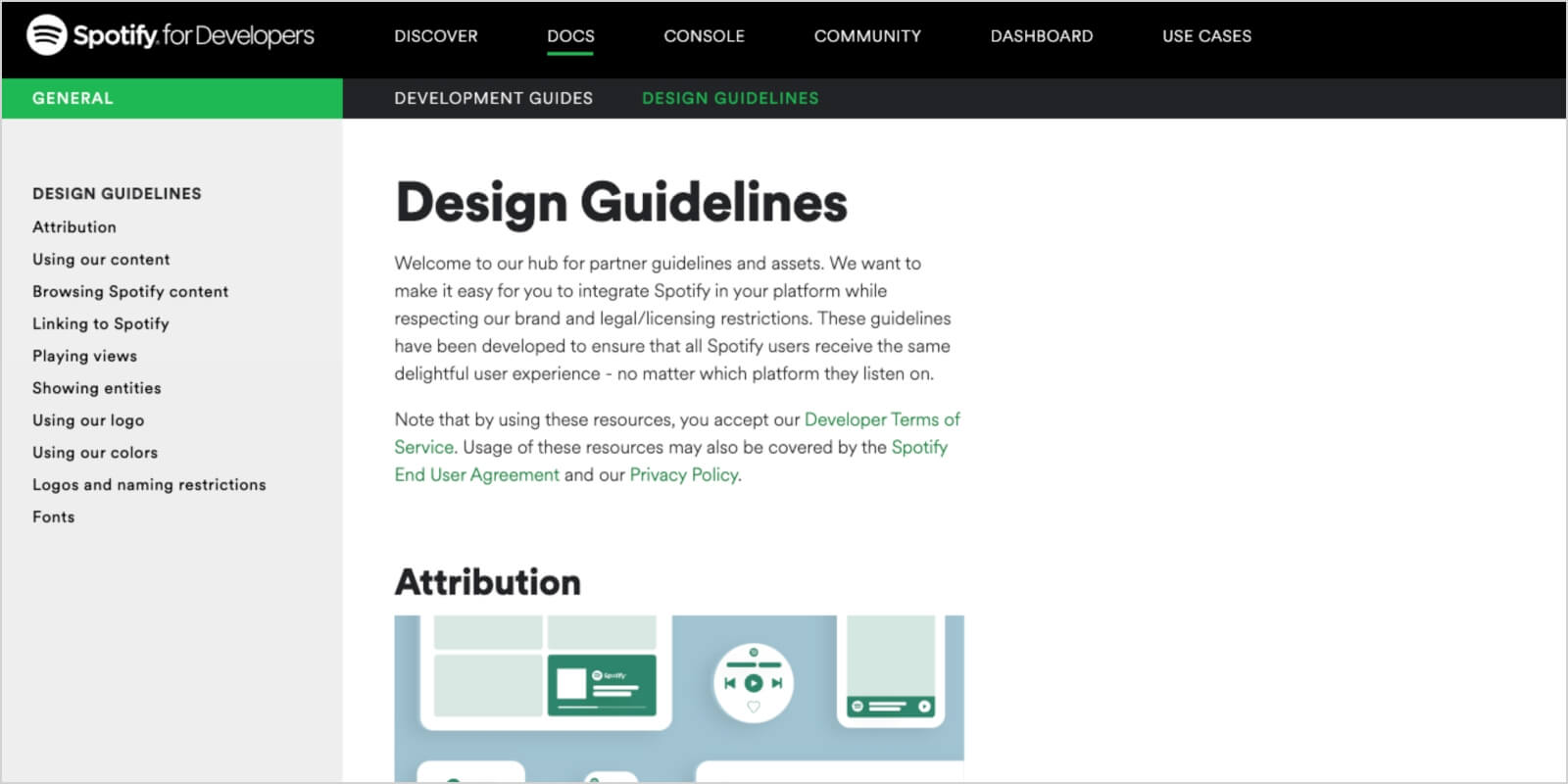
Spotify’s brand style guide is more in-depth than others on this list. It covers all the visual elements, such as colour palette and logo guidelines.
The brand colour rules are clearly stated. For example, there are instructions about which colours can be used on which backgrounds.
What makes this guide so comprehensive is all the brand guidelines on the use of their content. They include ample examples of logo misuse.
This brand guide outlines exact rules for using album art and artist content. Although the rules are strict, it’s easy to use their music by downloading widgets.
They go a step further by having a widget builder, where users can get the code and embed widgets to their own pages.
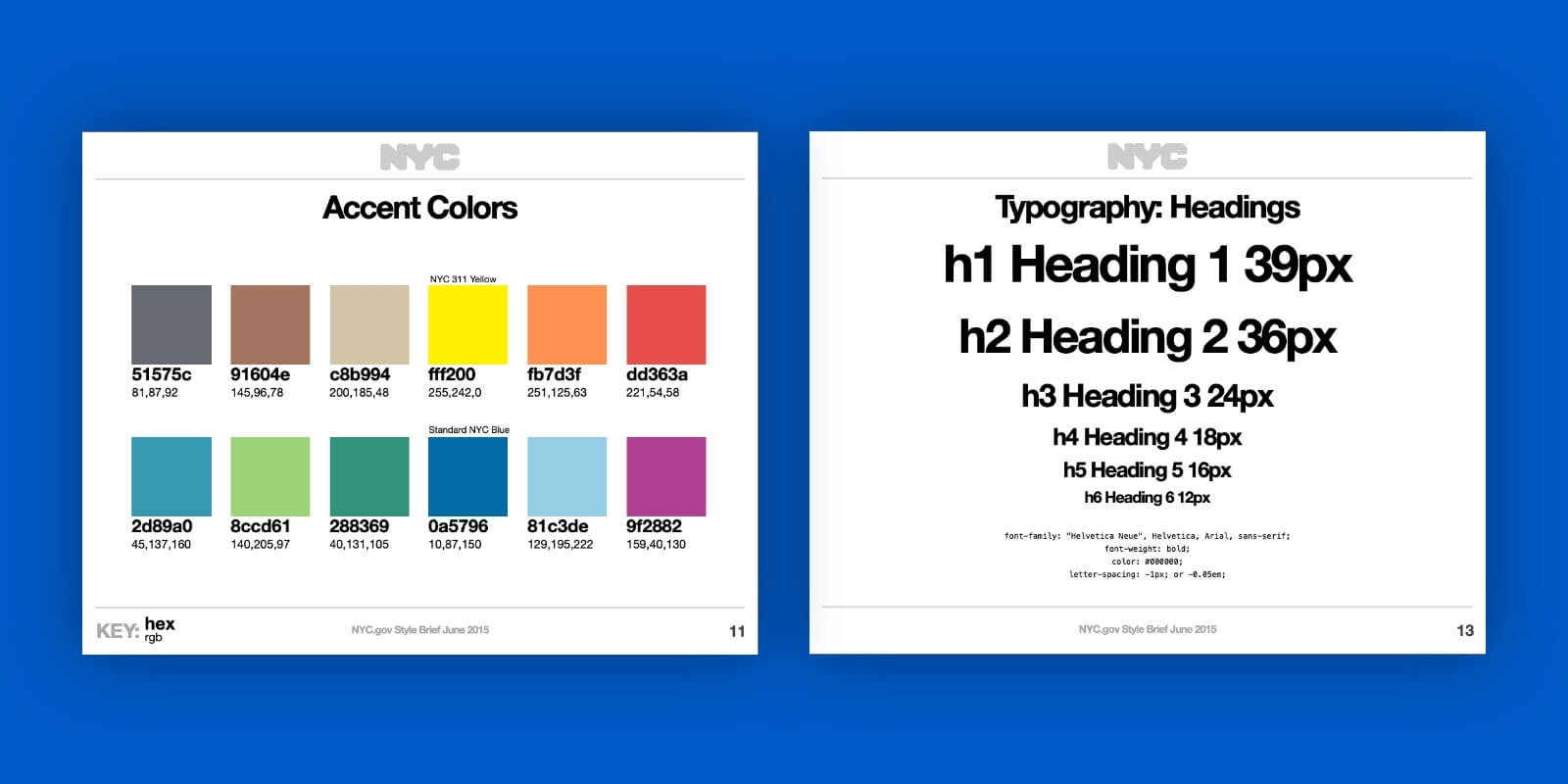
Thought you had to be a business to create a brand style guide?
Surprise!
Even New York City has created its own branding.
New York City has a very comprehensive guide. It includes rules for pretty much any type of material containing an NYC logo. There is no confusion about how the brand’s assets can be used.
They make sure to cover all of their bases, such as:
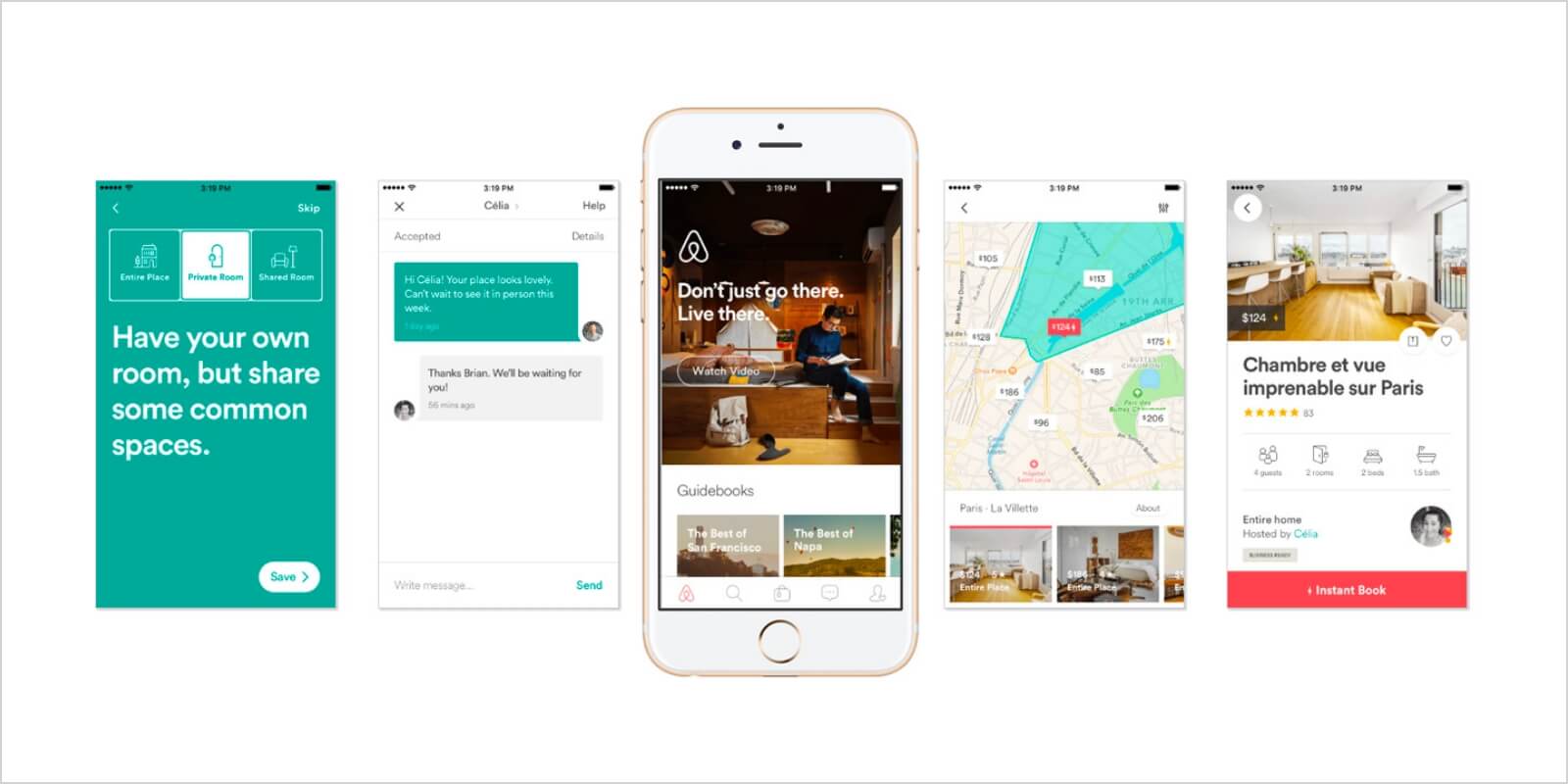
Airbnb makes its brand voice loud and clear in their brand style guide.
This brand’s guide stands out thanks to all the visual elements. They are used to assign importance to the meaning of the brand elements, and not the placement or instructions.
Each visual component tells a story of who they are as a company, while at the same time bringing the brand to life.
The powerful visual language allows Airbnb to be recognized globally, on a multitude of devices and platforms.
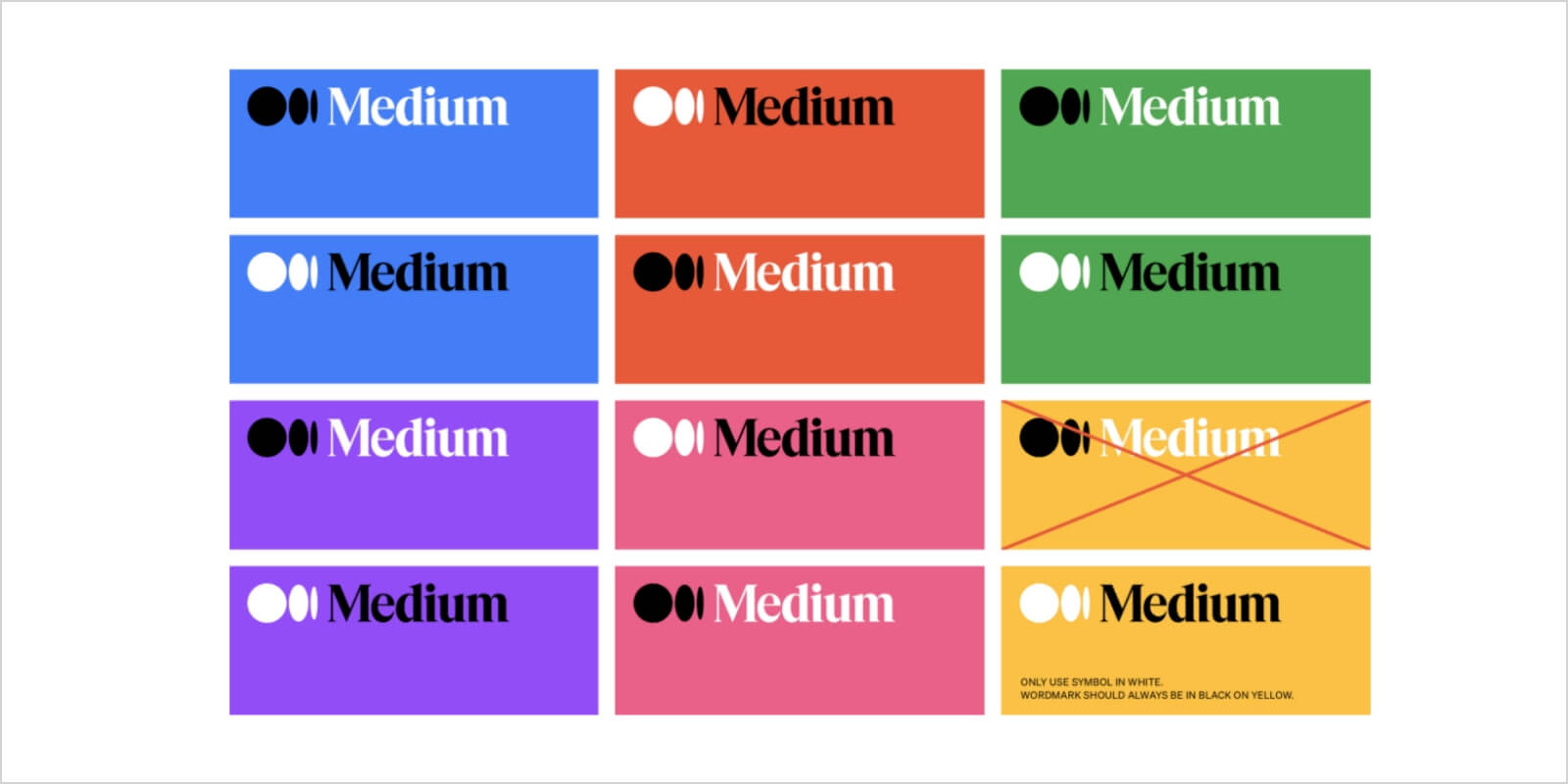
Medium’s style guide is a fantastic example of colour and typography.
It’s published just like a typical Medium post — they make sure to integrate brand guidelines with their platform style.
They also talk about the company's purpose and Product Principles.
Their set of guidelines include instructions for:
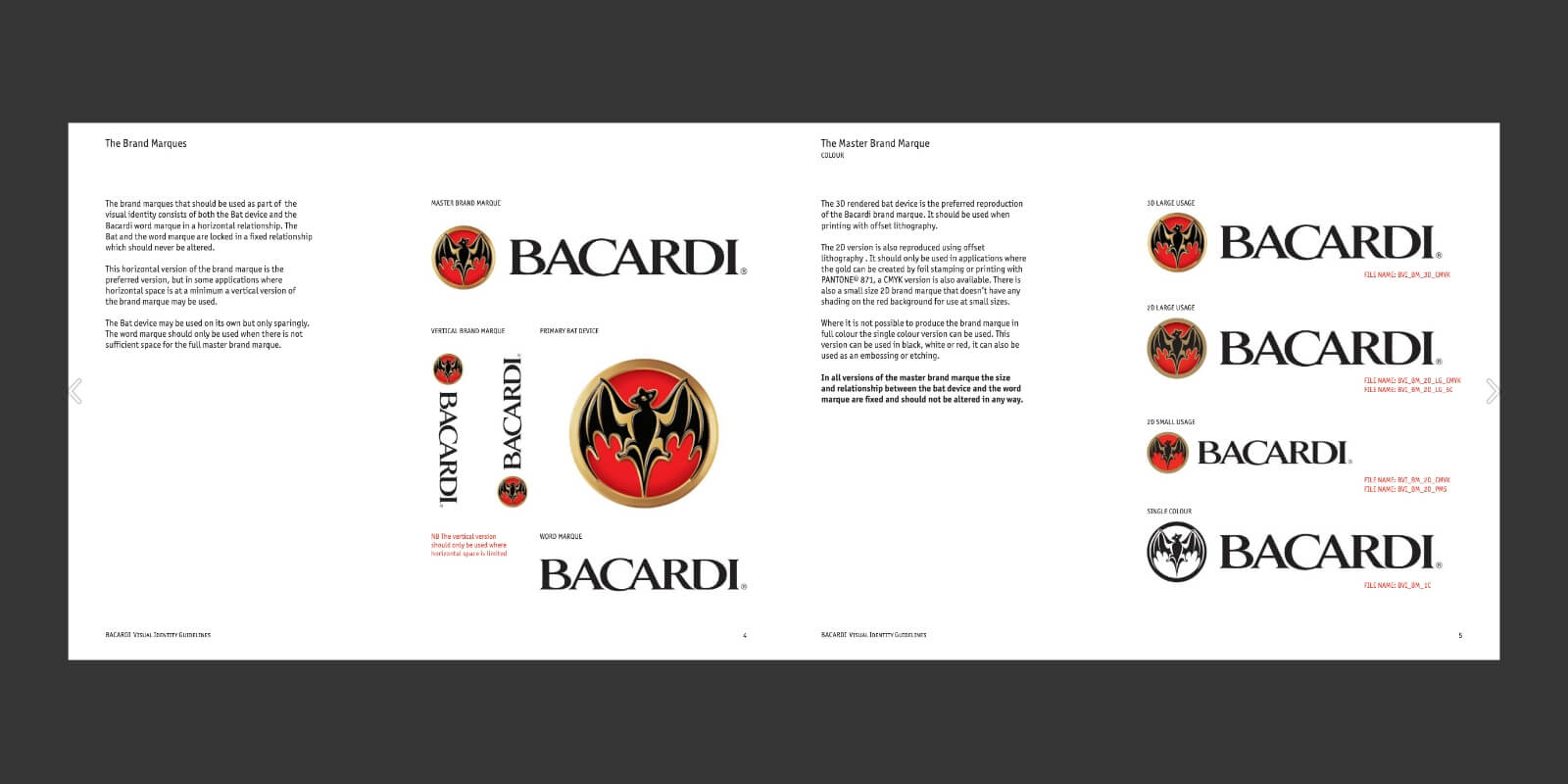
Bacardi’s style guide is all about its history.
The style guide talks about:
The main focus is on the logo. The guide sets clear rules on:
What makes this guide stand out is the way they show how the brand evolved over time, while keeping the original visual identity.
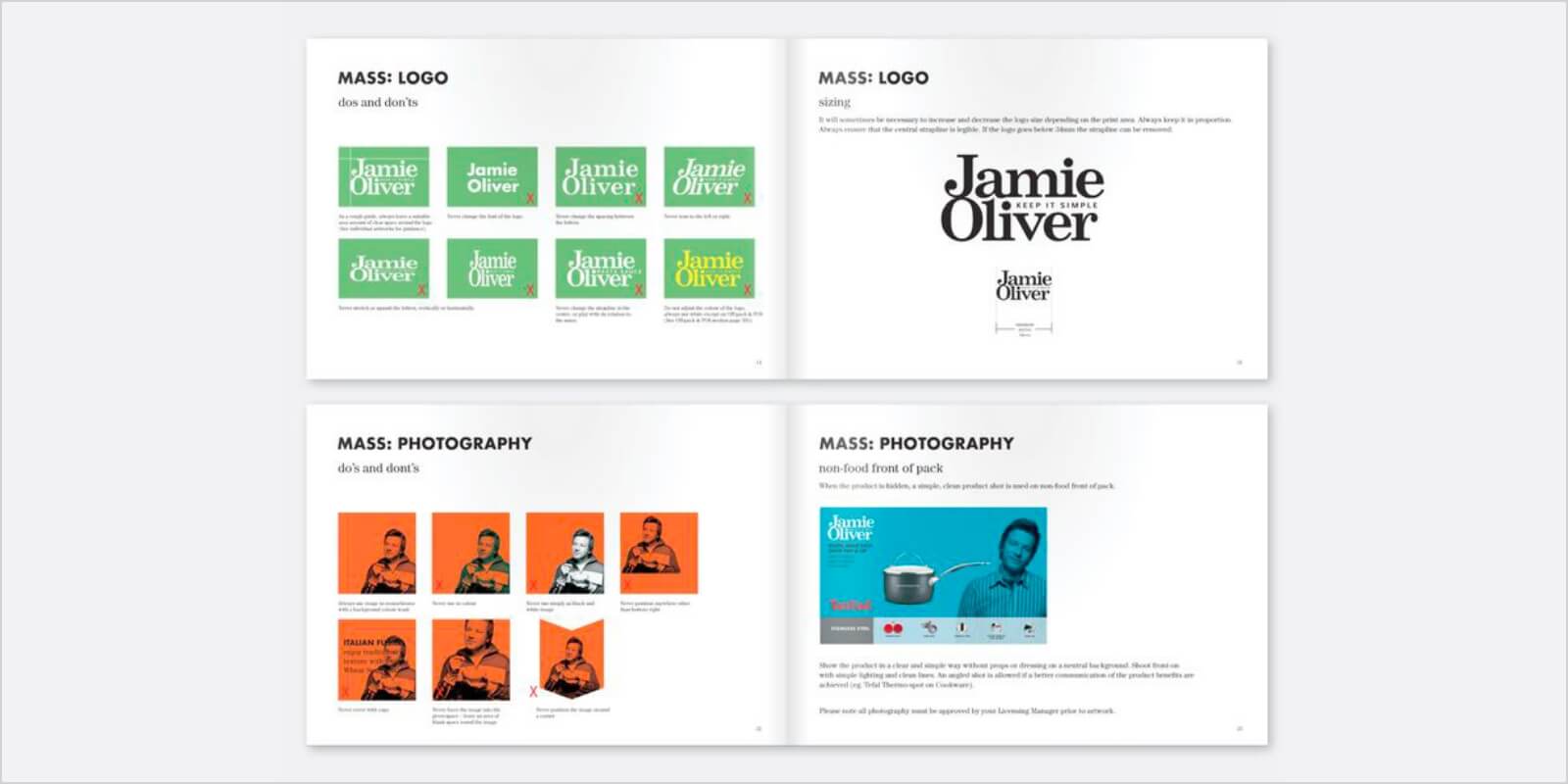
If you have a brand that deals with a lot of photographic elements, this is the guide for you.
Following this example, you can set your own rules on how you want your photography to be treated.
Take a look at Jamie Oliver’s branding manual for:
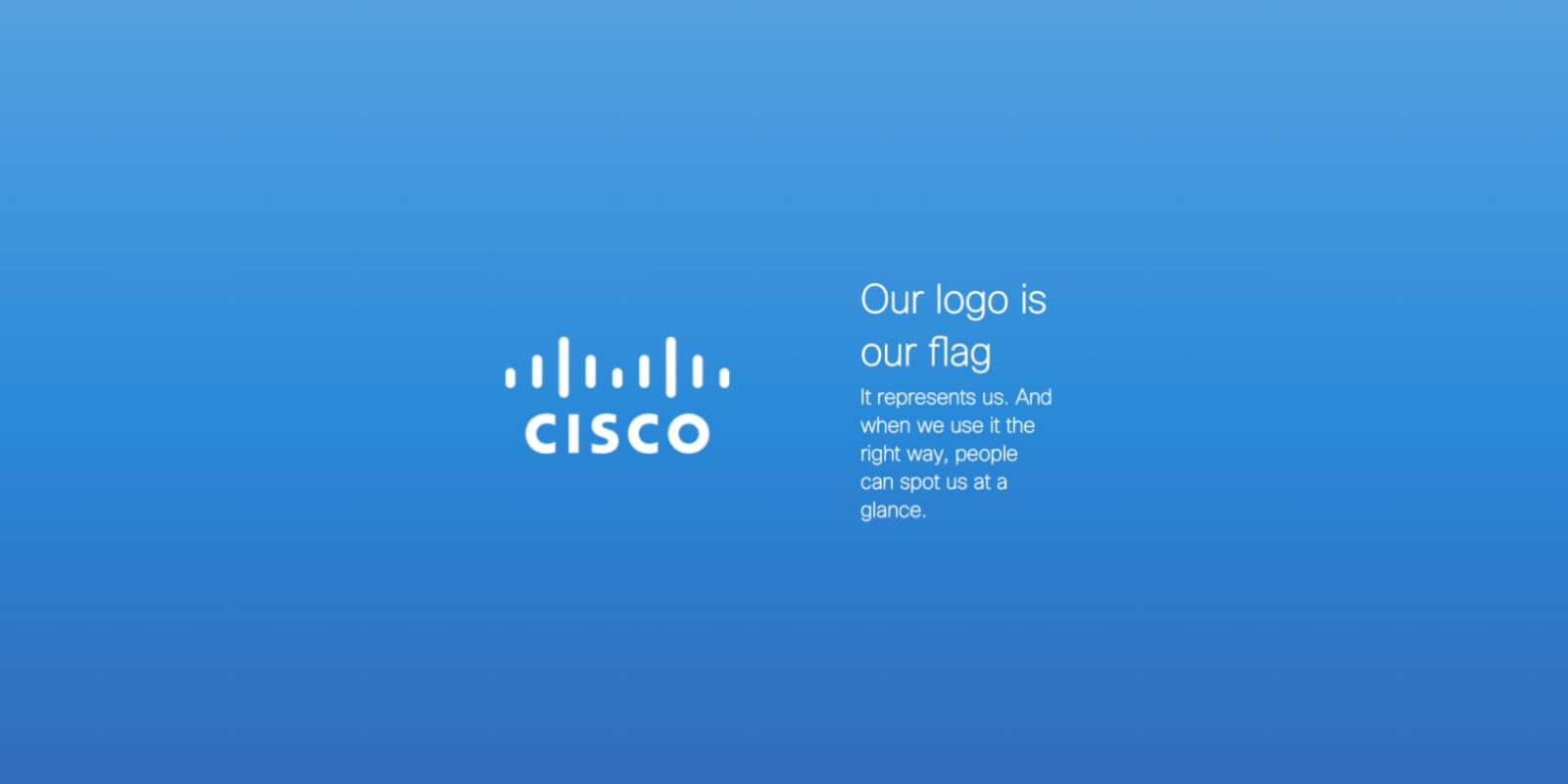
Cisco’s guide is not just a guide — it’s a whole interactive brand book, which covers:
If you’re only looking for Cisco’s colour palette, there’s a whole separate webpage addressing just that.
We hope these examples provided you with ideas for your branding and got your creative juices flowing.
It doesn’t matter if you are just establishing your brand, or you have an existing business, looking to lift your brand to new heights.
Red Kite is at your disposal for any branding help you may need. Don’t hesitate to contact us. Let’s make your business soar to new heights together.
There’s plenty of insight in the phrase, “Out of mind, out of business.”
This is why successful businesses invest in deliberate brand positioning.
But while “brand positioning” is a buzzword in boardrooms across the globe, few startups have a firm grasp of exactly what it means. The term is usually confused for various other marketing activities.
To put yourself ahead of the competition, you have to know what brand positioning is. From this perspective, you will have a keener understanding of why positioning matters and how to do it effectively.
With that in mind, let’s delve deeper into the topic.
Simply put, “brand positioning” is the place a brand occupies in the minds of its customers.
The term was popularised by Al Ries and Jack Trout in their bestselling book, Positioning: The Battle for Your Mind.
The authors had this to say:
“Positioning is not what you do to a product. Positioning is what you do to the mind of the prospect. That is, you position the product in the mind of the prospect.”
Ries & Trout, 2001
This means that whether you cultivate a brand position or not, you will have one — people are always forming opinions on everything they interact with, consciously or otherwise.
If you’re not making a deliberate effort to create a certain impression, you’re likely to end up with detrimental positioning.
To have effective brand positioning, you have to put conscious effort into it. This takes different strategies, including pricing, packaging, promotions, distribution, and competition.
The main objective is to create a certain impression in the customer's mind — they should associate something specific and desirable with your brand.
Think about how Nike has positioned itself as a brand that cares about athletic performance and innovation.
Everything about their brand strategy — from the name (after the Greek Goddess of Victory), to the swoosh logo, to the tagline (“Just Do It”) — emphasises their desired positioning.
In advertisements, Nike’s models aren’t smiling as they take a leisurely jog. They are athletes with their game faces on.
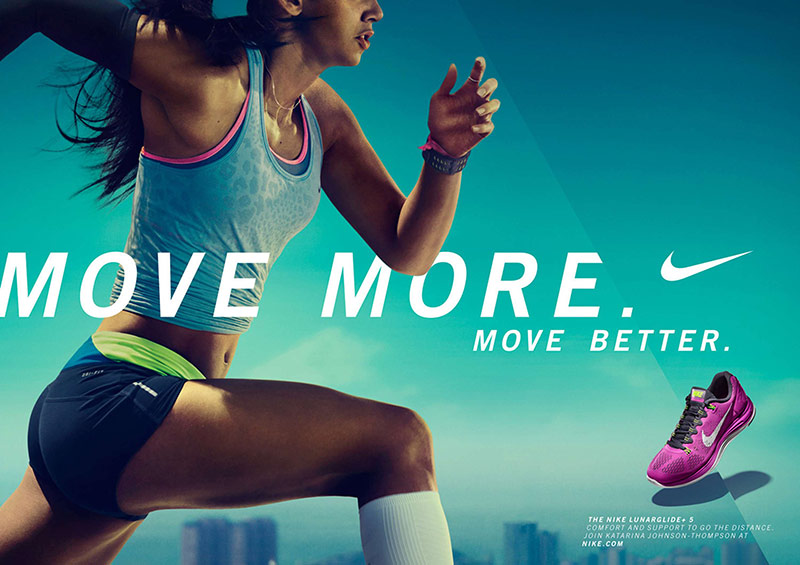
Sadly, many small businesses overlook the importance of having a brand positioning strategy. Without understanding what it is, they don’t realise the key role it plays in their long term success.
If you’re still wondering how brand positioning will help your business, read on.
Do you want to break through the marketplace noise? Investing in a strong brand positioning is one of the best ways to do so.
With hundreds and thousands of similar products in the market, positioning helps you define your brand’s uniqueness. And, additionally, with a defined position you will no longer be throwing darts at random targets with your marketing efforts.
Instead, you will be speaking directly to your target customer.
How will you make effective marketing decisions without clear brand positioning?
After defining your brand position, you will have a better focus on your brand strategy.
Brand positioning helps you identify your strengths and weaknesses. From this knowledge, you can find your unique selling point and position your brand accordingly.
Furthermore, you will be able to develop a clear set of creative guidelines to follow. This allows you to create on-brand campaigns that resonate with your target audience.
Brand positioning helps you clarify the specific value you provide to your customer — including how you satisfy the customers' needs, especially compared to what competitors are offering.
Without brand positioning, your value remains ambiguous, and no one values or buys ambiguity.
Even when you believe that your customer understands your unique value proposition, you will still need to justify your prices.
Positioning enables you to identify your price point in comparison to the competition.
You will be able to answer these questions:
A strong brand position can make a significant difference in generating and converting leads.
It helps customers connect with your brand on an emotional level. This makes convincing them to buy easier.
For instance, it doesn’t take much convincing to make an athlete or a fitness enthusiast purchase Nike products — their consistent brand positioning has already done the heavy lifting.
When positioning your brand in the market, there are various factors to consider and steps to take.
Creating a brand positioning strategy involves analysing different aspects of your brand. This helps you figure out:
The following steps will help you create a unique and effective brand positioning:
Do you know your current brand position? Understanding how your product or service is viewed by your target audience will help guide you with the following steps.
Start by surveying your core customer base.
The information gathered from your customers will give you insight on how to improve your brand positioning.
Think about your company mission, values, and value proposition — how do they match up to how customers view you?
After taking a good look inwards, it’s time to look outwards. To position your brand, you need to understand how you fare against the competition.
Create a list of your competitors and conduct an in-depth analysis. What are your similarities? Is there something unique you offer that they don’t?
There are various methods you can use to get insight into the competition, which include:
Extra Tip: To keep your competitor analysis simple, start with the top three or four direct competitors.
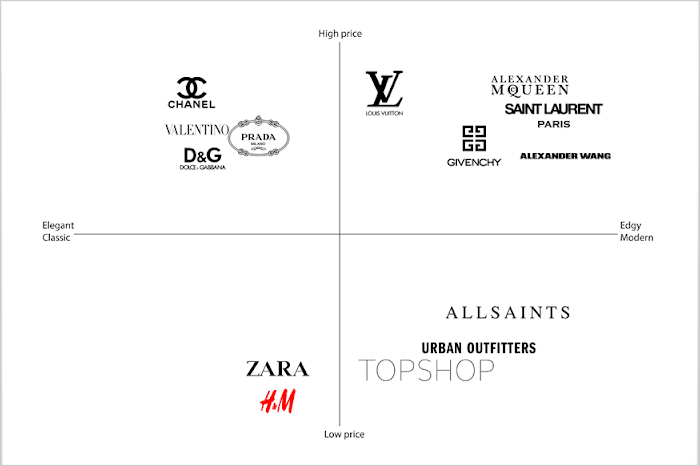
A positioning map helps define the place a brand occupies in the market.
Start by listing your brand’s attributes, as well as those of competing brands. Next, list the various price points and the type of customers they target.
Finally, draw a perceptual map (like the one in the image above). Place brands in the position you’ve determined through your analysis.
This map will give you a visual insight into your competitors and industry. From this point, you will be able to identify gaps in the market that will help you position your brand.
Why would someone choose your products or services over similar ones in the market?
With the information gathered in the previous steps, list your brand’s strengths. In your competitor analysis, you probably identified their weaknesses — you can capitalise on some of these.
Don’t list traits that you wish you had — you have to be certain that you can deliver on your “reasons to buy.”
Your brand’s strong points are what makes it unique. This will form the foundation of your brand positioning statement.
Now it’s time to craft your positioning statement.
Simply put, a brand positioning statement is a summary of:
With this in mind, you craft a simple but compelling positioning statement. Make sure to keep it brief — one or two sentences. This will help you stay on point with all your marketing efforts.
Take a look at Nike’s positioning statement:
“For athletes in need of high-quality, fashionable athletic wear, Nike provides customers with top-performing sports apparel and shoes made of the highest quality materials. Its products are the most advanced in the athletic apparel industry because of Nike's commitment to innovation and investment in the latest technologies.”
Nike’s statement is a great example of the elements you should include in your own. These elements include target market, customer pains, brand promise, and mission.
You will probably tweak the positioning statement several times before it feels right. Wait until you have the final version to share it with the public.
You have a proper brand positioning strategy. Now, it will inform and transform the way you do business.
Your positioning strategy should serve as a compass for all your business activities.
Make sure your adverts and marketing reflect your position. During the sales process, reinforce your brand's differentiating qualities.
Every member of your team should understand your positioning strategy. This way, they can embody it to the target customer.
Behind the failure of many businesses is the lack of an effective positioning strategy. It pays to hire a professional to assist you in doing it right from the beginning.
You don’t need to look any further.
Red Kite Design is skilled in helping brands position themselves to strengthen their market share. We create brand identities that are strategically designed to convey a unique message to your target audience.
We take the time to understand your business and its ideal customer, ensuring effective brand positioning.
Here is what our clients have to say:

Unruly Apparel owes its achievements to Chris Harris and his artistic vision and ability
As a start-up sports fashion business of which the success relied on the impact of its brand, Unruly Apparel owes its achievements to Chris Harris and his artistic vision and ability. I can’t recommend working with Chris enough. Prepare to be challenged, inspired and ultimately very satisfied with any project you choose to task him with. Unruly Apparel simply isn’t what it is without Chris and for that I can’t thank him enough!
Jamie - Unruly Apparel

You, too, can be one of our success stories.
Request a free quote and get started right away.
“For individuals looking for high-quality beverages, Coca-Cola offers a wide range of the most refreshing options — each creates a positive experience for customers when they enjoy a Coca-Cola brand drink. Unlike other beverage options, Coca-Cola products inspire happiness and make a positive difference in customers' lives, and the brand is intensely focused on the needs of consumers and customers.”
You won’t hear that spiel on TV adverts. You won’t read it on a billboard. And you won’t find it on Coca-Cola’s website, either.
Sure, you can “open happiness” – but Coca-Cola isn’t open about its brand positioning statement.
Some things aren’t meant for the public eye.
And that’s one of the major elements of brand positioning statements – they’re meant to be private, internal, out of the public realm. Unlike taglines and mottos, they don’t cry out for attention.
Today, we’re going to explore these introverts of the branding world.
So, sit back, open up that can of happiness, and let’s begin.
The simplest definition of a brand positioning statement is this:
A brief description of how your product or service fills a need of your target market or audience. It’s meant to be an internal tool to help align marketing efforts with the brand’s identity.
A brand positioning statement consists of:
Let’s look at each of those parts in detail. We’ll break down Coke’s statement above as an example.
Most positioning statements are no more than a line or two. This keeps things succinct. It’s all in one place and it’s easy to remember.
Coke’s above positioning statement is all of 2 sentences. Granted, they are a bit long, but they get the message across. Each word is necessary and most are exactly the right word. No others will do.
Coke caters to “individuals looking for high-quality beverages”.
So ask yourself this: who are your customers? To whom does your product or service appeal?
Better yet, who are you trying to appeal to? What’s your target audience?
When forming your brand positioning statements, your target audience comes first. You have to know exactly who you serve in order to make sure your brand delivers to them, right? And when marketing, you have to know who to appeal to.
Otherwise, your brand positioning is off and your marketing efforts will most likely fail.
Meeting your target audience’s pain points can’t be accomplished until you know who they are. Honing in on your target customers has to come first.
The next important element is the product line or service you offer. Coke spells it out as “the most refreshing options”.
Your offer is central to your brand identity and your positioning statement. It’s why your customers come to you and not the competition. It’s what you want your brand to be known for.
You may not have the most refreshing thing to offer, but your brand is yours and you offer it with pride. Your brand’s positioning statement should reflect that pride and confidence.
Your brand promise is what your target audience stands to gain by using your product or service. It’s the pain points your offer addresses and dissolves. The solution it provides. The change your brand makes in your customers’ lives.
For Coke, that’s a “positive experience” and a “positive difference”.
What is your brand’s promise? What big, important thing do you offer your tribe?

This is where many people confuse a brand positioning statement with a fellow marketing declaration – the mission statement.
Mission statements are those feel-good, public-facing one or two liners created by a brand all about why you do what you do. They’re meant to impress your customers and prospects.
And that’s wonderful. But a brand positioning statement is for you. It’s a quiet reminder of your purpose as a business. The ideals you and your brand hold nearest and dearest.
With Coke, they want to “inspire happiness” and make those positive experiences a reality.
Why do you do what you do? What inspires you and motivates you to get up and at it every day?
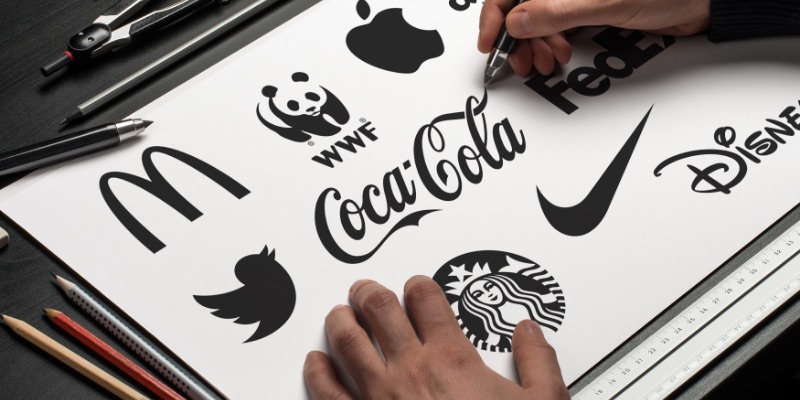
What sets you apart from the competition? What makes you unique? How do you compare on the scale?
This is another aspect of brand positioning statements that often confuses those new to branding and/or business.
A value proposition statement sets down in writing just how your brand and your business is different from all those other guys out there. It’s a big, broad picture of the benefits your offer provides.
And while a value proposition is big and broad, your positioning statement is bigger. It’s broader. It’s the wall-sized mural as opposed to the over-the-fireplace portrait.
And guess what? You can’t create your positioning statement until you’ve ironed out your value proposition statement.
You can see Coke’s value proposition on meeting the needs of their target audience spelt outright in their brand positioning statement, with phrases like “Unlike other beverage options” and “the brand is intensely focused”.
According to HubSpot’s report, brand consistency can increase revenue by up to 23%.
How do you achieve brand consistency?
By being absolutely rock-solid on what your brand is and who you are as a business.
Your brand positioning statement is all that in a nutshell. Your marketing people can simply look at it and know how to craft their messaging. Everything from your voice on social media to your entire marketing campaign for the next year is easily identifiable.
You know who to appeal to, why you’re appealing to them and what you hope to accomplish.
And since it’s created for internal use only, if there’s some private, personal mission or value you wish to express, you can share it without concern for public perception.
The actual work of creating a brand positioning statement is mostly mental work. You have to knock out all those bits we just discussed. Once you have all that clearly defined, you simply need to sit down and fill in this template:
(Brand name) provides (target audience) with (offer) that (main benefit/pain point relief that sets you apart from your competition) because (your reason why).
It’s all there – who you serve, your offer, your brand promise, why you do what you do, and how you do it differently from others.
You can take up more words, more space, if necessary. But remember, with a positioning statement, a brand needs to keep it short and to the point. This is not the time for flowery prose or waxing poetic.
We’ve already mentioned that a brand positioning statement is great for your marketing team and their efforts. In creating and using a positioning statement, a brand positioning itself firmly amongst the competition becomes easier.
And there are other benefits, too.
In creating your brand positioning statement, you gain an immense amount of clarity you may not otherwise have had the opportunity to acquire. Consider all that thinking involved. It has to lead to something good, right?
You can also share your brand positioning statement with others outside of marketing. When everyone involved in your business knows exactly who you are, what you do, and why you do it – this inspires that company culture and unity so many strive to achieve but never do.
Inspire your sales team. Inspire your administrative staff. Inspire your customer service reps. Imagine them all pulling together.
With everyone on the same page, you can create a cohesive, unstoppable business team that won’t settle for anything but the best out of themselves and each other. Imagine the change that can bring to your little corner of the world.
Not bad for an introverted little statement, eh?

One of the things we’re known for here at Red Kite is helping businesses establish their brand identity. Your brand’s positioning statement is a big part of that brand identity.
Bring us your brand’s positioning statement - or allow us to help you create one - and we can get a better idea of just who you are and who you serve. Why you do what you do. Then, when we sit down to create your brand identity, we’ll be better informed and ready to go.
So, get busy on that quiet little inspiring statement that positions your brand firmly in its place, and then contact us to handle the rest. It really is that easy to create a cohesive, professional identity for your business.
And that’s something to be happy about.
Let’s play a little game to start, shall we?
When you think of a good quality, cheap chocolate bar – what comes to mind?
A Cherry Ripe? A Polly Waffle? A Cadbury Dairy Milk?
What if you need to get a quick bite of lunch on the go; where do you stop?
Subway? Grill’d? Nando’s?
Those three chocolate bars and three fast-food chains are at the top in their categories among hungry Aussies.
Our buying habits and their brand positioning have placed them at the top of the pile. So, choosing any of those three when asked about a quick bite or sweet treat puts you in very good company.
Do you know where your business stands with your customers? How do your customers view you, your brand, your product or service? What’s your market positioning?
We marketers use a handy tool to find out just those very metrics to help you market your business better.
This tool is called a perceptual map (or a positioning map). It maps perceptual ideas customers have about a brand or product.
Today, we’re going to examine the perceptual map in detail.
Let’s begin.
When determining a new product, pricing out an existing product or devising how to market a product or service – you may feel the need to be a mind reader. Or worse yet, like you’re on a journey without a map guiding you to your destination.
What do your customers think? How do they really feel? What are the perceptions of customers about your brand?
One thing that can help in this domain is perceptual mapping (or positioning mapping).
Called perceptual maps or positioning maps, these visual representations of those very consumer perceptions are vital to your marketing efforts.
A perceptual map in its simplest form is an X-Y axis graph that shows how customers view a brand in comparison to the competition.
The two dimensions (X and Y) on a perceptual map represent two factors – preferably the most important – that potential customers use when determining whether or not to buy. Each axis is given two opposing attributes of the given factor, one on each end.
In the case of our candy bars, we can make a perceptual map with the price on one axis and quality of chocolate on the other.
Our top 3 are placed in the low price, high-quality quadrant, and the critic who claims no one over 10 would eat a Chomp bar would place that option in the low price, low-quality quadrant.
And that’s how perceptual maps work.
You gather data from various customers and possible future customers and score it on your graph. Where your brand falls can be considered a true perception of how customers see your brand.
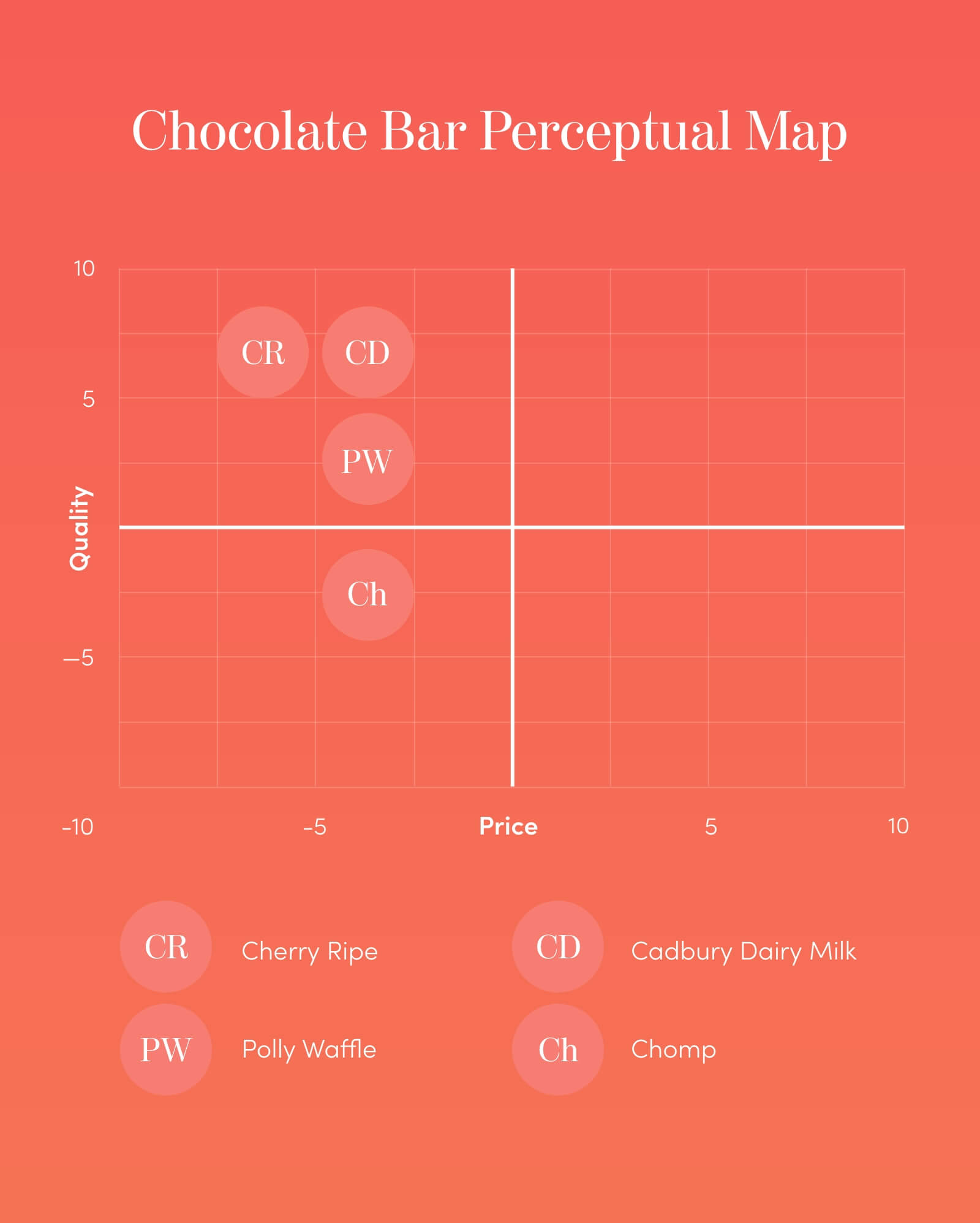
Reading a Simple Perceptual Map
Above we have our chocolate bars, all mapped out for you in a perceptual map.
Our top three are clustered together at the top of the perceptual map, while poor old Chomp bars are in the bottom quadrant all by themselves.
And now we understand perceptual maps and perceptual mapping in a nutshell. Or in a candy bar wrapper, in keeping with the theme.
Let’s say you want to find out how your product stacks up against competing products in more than just two factors. You’ll need a more complex form of perceptual mapping.
Take a look at the perceptual map below. It lists several brands of over the counter pain relievers.
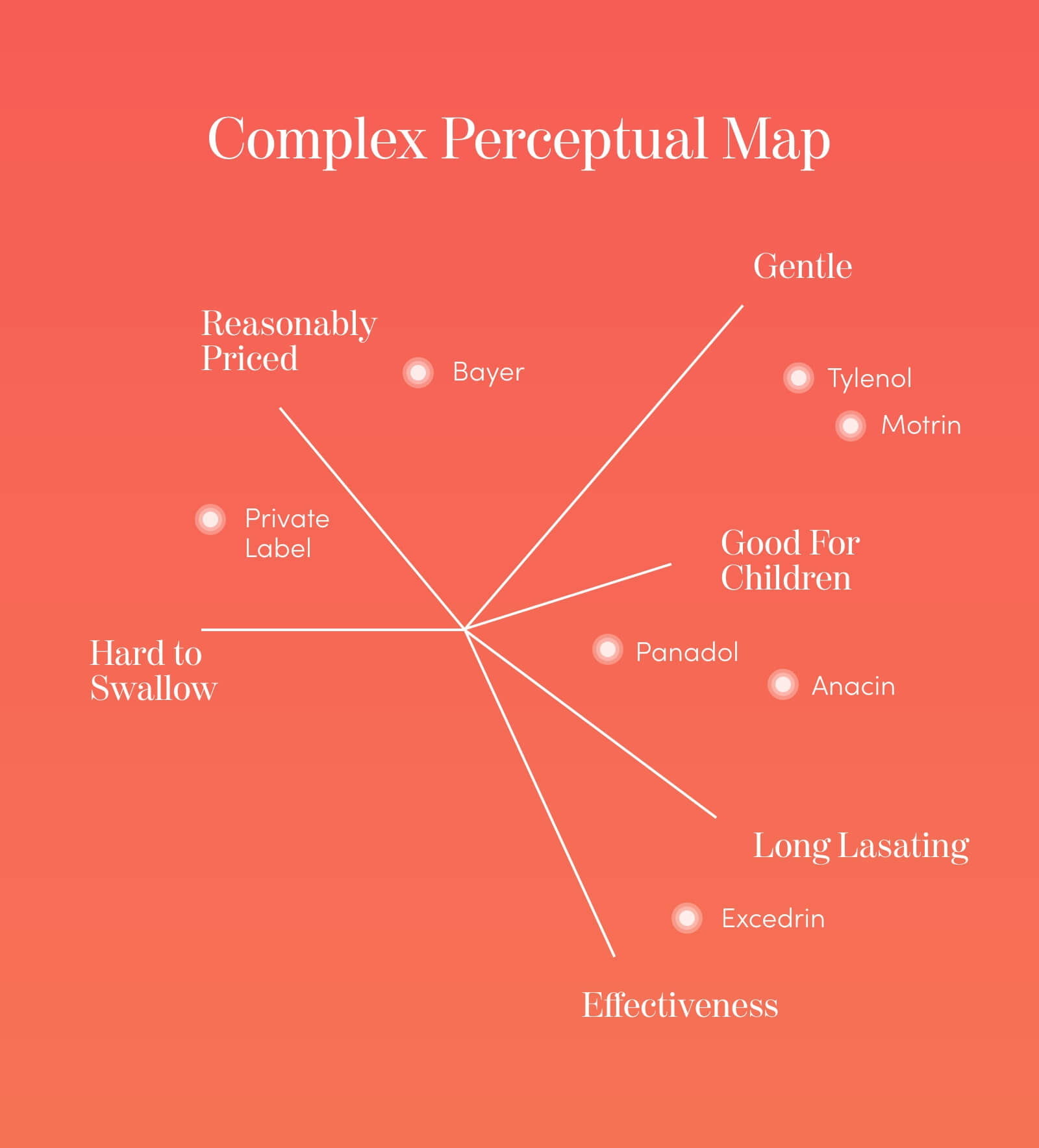
The makers of this example perceptual map wanted to gauge customer thoughts and feelings about 6 different aspects of the products.
The multi-dimensional aspect of this example perceptual map allows for all of that data to be visualised.
At its heart, a perceptual map gives you a qualitative, real-life look at your consumers’ subjective thoughts and feelings. How they perceive your brand and others is not something you can ordinarily gauge without perceptual mapping.
It would take a great deal of time and effort, and often money, to get the kind of competitive research a perceptual or positioning map offers. You can actually see how your product is perceived by potential buyers and why they may or may not be purchasing from you.
Your positioning in the marketplace becomes obvious and easily visualised.
We’ve focused on the qualitative nature of perceptual maps because that’s how they are most commonly used. You can, however, use positioning maps for quantitative data, too.
Let’s say you want to determine how well your product holds up over time vs. your competitors’ products when used with two different frequencies. You can create a positioning map using real data.
First, ask how often consumers use their Gadget 2000. Then, how long they’ve had it. Go to SuperGadget’s customers and ask the same questions. Create your perceptual map from the resulting data.
Your X axis demonstrates the frequency of use. Your Y axis records the length of ownership. You can easily see just how your product compares to SuperGadget, along with any other competitors of interest.
To map the perceptual ideas buyers have about your product or service, there are a few simple steps to follow:
Ultimately, your goal will determine the factors you use and the type of perceptual map you create. Want to know why consumers aren’t buying your product? Ask about price, quality and customer service.
Want to develop a new product or improve an old one? Ask why they don’t use your product or how they perceive your product being used.
And don’t forget that you don’t have to stick with just two factors. As our example perceptual map shows above, you can choose as many as you need.
The better the questions you ask, the more detailed your data will be. Their responses will help you create a more comprehensive and accurate perceptual map.
Create your survey using a customer satisfaction template. You are, after all, asking about their good or bad ideas, along with their satisfaction with your products and competing products.
Brick and mortar operation? Hand out the survey. Include it in the bag with their purchase.
Online? Attach it to their receipt email.
One of the hardest things to do is to get customers to take action after a sale. The best way to get your surveys answered is to offer an incentive. Give them a coupon or discount code when they return their survey.
Use a spreadsheet and document their responses. It’s the simplest way to record your data.
There are multiple graph makers available online; some are even free (we used one to create the example perceptual map for our chocolate bars). Anything from a professional, print-ready PDF to a simple perceptual map like we’ve used here is possible.
There are many ways to use perceptual maps in your marketing:
A perceptual map can give you all that data and insight into your positioning in the marketplace.
Here at Red Kite Design, brand identity is a big deal. Using a perceptual map helps you get a true and insightful picture of just how your customers view your brand and its products. Along with your brand identity as a whole.
Think for a moment. Everyone recognizes the Subway colours - green, white and yellow. They represent fresh, healthy food. Cadbury’s distinctive dark purple wrappers suggest richness, comfort and quality.
Wouldn’t it be something if your brand became just as recognisable? Just as central and yet unique in your marketplace’s positioning?
We can help with that. Contact us today for a free quote or for more information.
Everyone in the world is unique.
The same is true of brands. Every brand has a unique brand identity that is defined by different elements.
Most people use the terms brand, brand identity and branding interchangeably. Although these terms are closely related, they have different meanings.
Brand: this is how people perceive your company.
Branding: these are the actions you take to build a certain image of your company.
Brand identity: collective elements that a company creates to portray a certain image.
Brand identity is how a business presents itself to the public. It is the way it distinguishes itself in the consumer’s mind.
Example: Let’s say you’re a high school student and you want to be one of the cool kids. You realise that you need new trendy clothes, fashionable shoes and accessories. You’re using these visual elements to create your personal brand identity.
In business, brand identity includes visible elements such as:
Large corporations usually have entire departments dedicated to building brand identity. These departments also maintain brand identity and evolve when necessary.
Small businesses don’t have the same resources, but they can also build a strong brand identity.
Whether you intentionally create a brand identity or ignore it, you will still be presenting a certain image to your audience.
By leaving it to chance, you lose the opportunity to shape your brand image.
Here are a few reasons why brand identity is important:
It is the “face” of your company: Elements such as the brand logo immediately tell the public who you are as a company.
It creates credibility and trust: A brand identity makes your brand more memorable. This gives you a competitive edge in the marketplace.
It promotes advertising: It provides a framework for all advertising and marketing materials.
It generates new customers: Brand identity is key in attracting loyal customers. When people identify with what your brand stands for, they're more likely to become loyal to the brand.
Developing a brand identity is crucial in marketing your business.
The more consistent and cohesive your brand identity is, the easier it will be for people to understand and connect with.
To create your business brand image, you first need to determine the message you want to send.
To do so effectively, you need a keen understanding of who you are as a brand.
To determine who you are, here are some elements to consider:
If you’re still feeling confused about your brand identity, don’t worry. This can be resolved by answering the following questions:
To create an effective brand identity, one of the first steps is to conduct market research.
The purpose of market research for branding is to:
A SWOT analysis is a simple but powerful tool for developing a brand strategy and identity.
SWOT analysis is a technique used to determine Strengths, Weaknesses, Opportunities and Threats.
Strengths: The positive characteristics that give your business an advantage over competitors. Strengths include having the latest equipment or a skilled and experienced team.
Weaknesses: Negative characteristics that put your business at a disadvantage. You will have to work on the weaknesses to maximise your business success. Weaknesses include lack of updated equipment or gaps in the team.
Opportunities: External factors that are likely to contribute to your business success. Opportunities might include preferable trends or favourable regulations.
Threats: External factors that pose a threat to your business success. For example, changing consumer preferences might negatively affect your business.
Brand design is the process of creating symbolic elements that make up the brand identity.
Brand design is one of the initial practices in the branding process. This process ensures that the design components are cohesive to ensure branding success.
Here are the design components to consider:
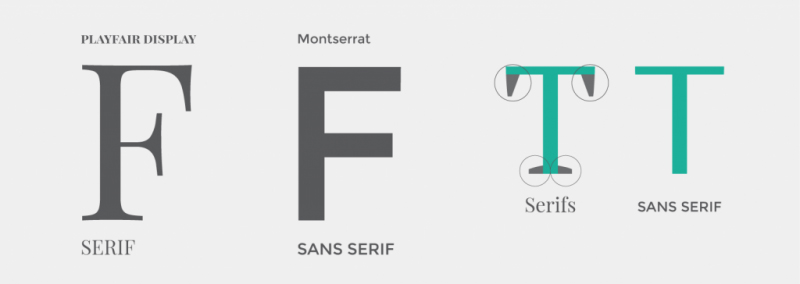
Typography is the font you choose for your branding materials. When selecting your brand’s typography, think about style, legibility and readability.
The typography you choose should create a unique expression. The right choice of typography is a simple yet powerful way to create a brand identity.
Because of its visibility, it's important to consider the typography on your logo.
There are four main types of typography:
Serif fonts: The letters have anchors (what seem like little feet). Serif fonts give your brand a sense of strength and trustworthiness. Serif fonts include Times New Roman and Garamond.
Sans serif: The word “sans” means “without”. In this case, sans serif refers to fonts where the letters don’t have anchors. Sans serif fonts give your brand a modern, sleek appeal. San serif fonts include Helvetica and Franklin Gothic.
Script typography: This is the kind of font that emulates cursive handwriting. Script typography has a luxurious and feminine feel. Popular script fonts include Allura and Pacifico.
Display typeface: These are fonts that are meant for use at larger sizes. Display fonts are ideal for headings and billboards rather than extended passages of text. Display fonts have specialised elements such as unusual letter shapes, outlines, or shadowing. They are very artistic and are effective in making bold statements.
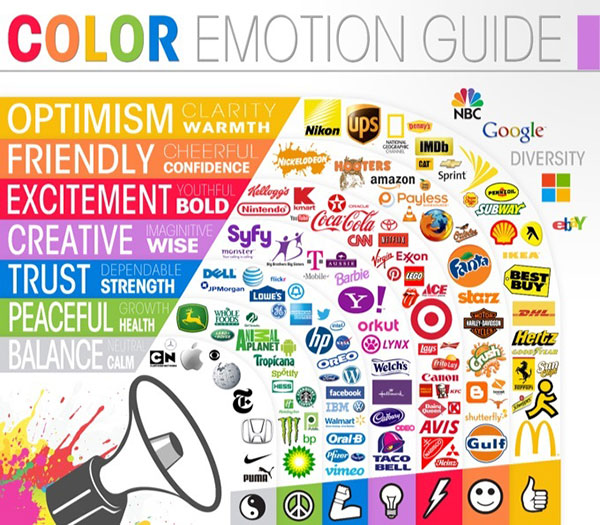
Think about the colours that best represent your brand.
Colours have psychological ties that provoke certain emotions and associations in your audience.
Consumers make a subconscious judgement about a product within 90 seconds of viewing. Between 62% and 90% of that assessment is based on colour alone.
The most iconic brands use colour for effective branding. Some even trademark their defining shades. Brands with trademarked shades include Cadbury, Barbie and UPS.
Research the visual language of different colours. This will help you select the right hues for your brand image.
Shape and form are subtle elements which impact the feel of your brand image.
For instance, brands that use round and oval shapes are associated with warmth. They create a sense of community, unity and love. Round shapes are also associated with femininity.
Straight-edged shapes are linked to strength and efficiency. Vertical lines suggest masculinity and stability, while horizontal lines have a tranquil vibe.
Ensure that you balance strong forms with bold colours to connect with your audience.
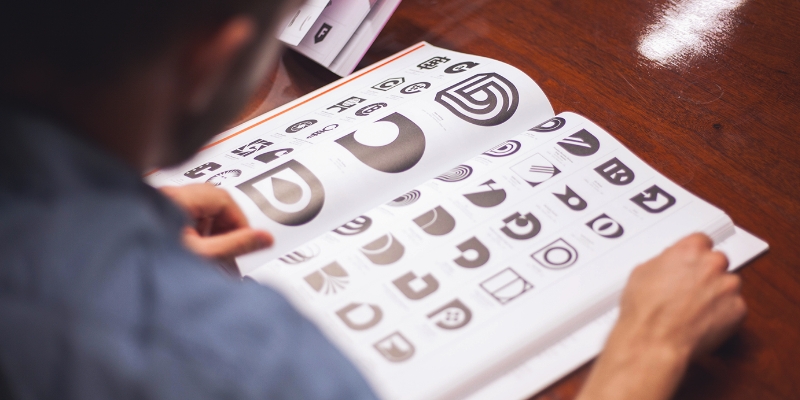
A logo is a small but vital part of your brand identity. A logo is the most recognisable part of a brand.
You will use your business logo to brand everything associated with your brand. This includes your website, packaging, employee uniforms and business cards.
Because of the crucial role a logo plays, make sure that yours meets these key criteria:
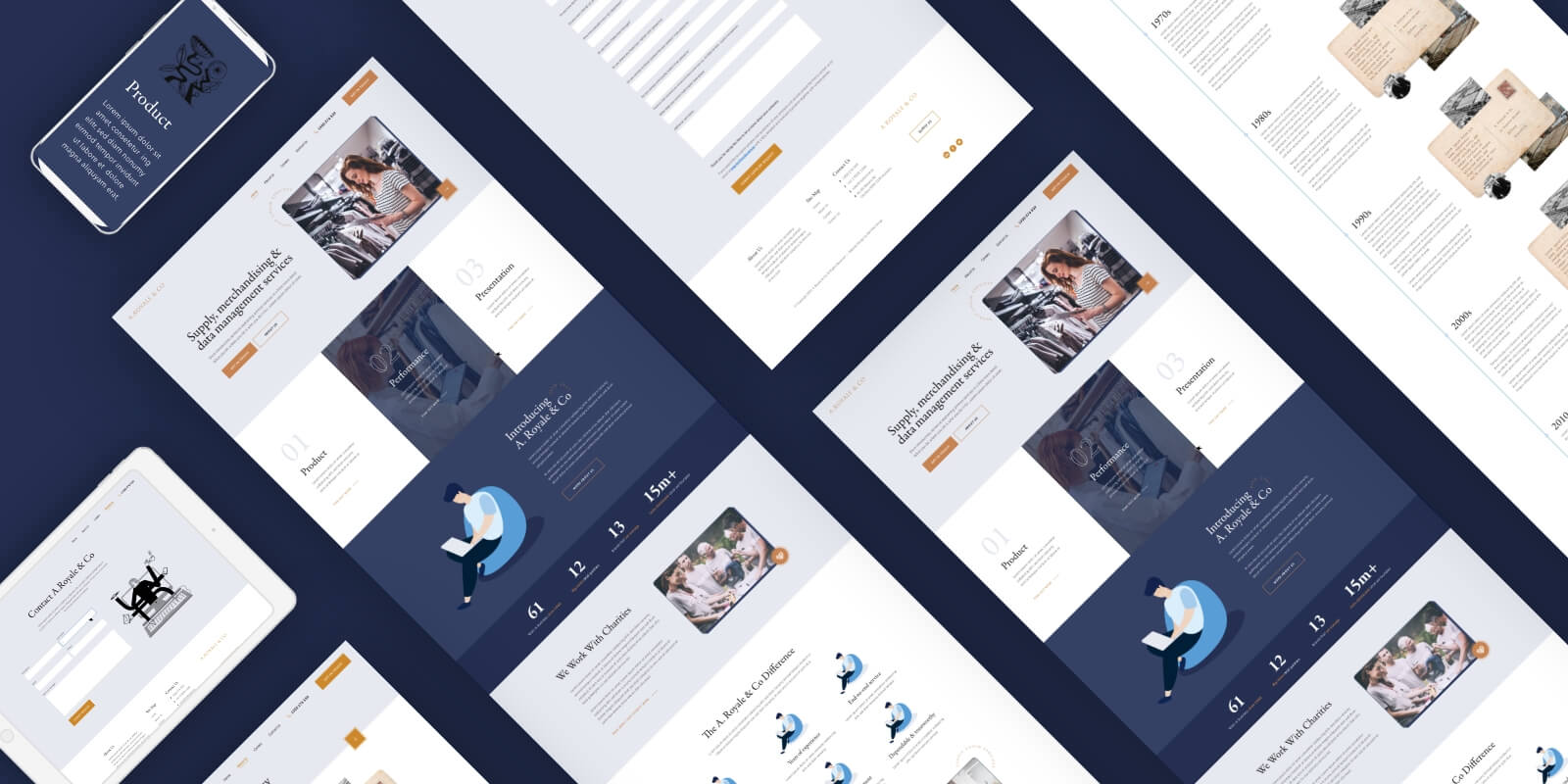
In today’s digital world, your website is one of the most essential aspects of your brand image.
Your website design offers plenty of branding opportunities. This is especially true if you’re running an online business or selling a digital product.
Your customers will constantly interact with your website. This is why your brand identity should come through in full force on the website.
For this reason, invest in top-quality web design and development.
A well-designeíd website has visual components that help the audience remember your brand.

Social platforms are a great way to build brand identity.
There are a plethora of platforms on the internet you can use to establish your brand identity. There’s Facebook, Twitter, Instagram, Snapchat, YouTube, TikTok, Pinterest and LinkedIn among others.
These platforms offer an opportunity for two-way communication with your customers.
In today’s world, more and more consumers are turning to social media platforms when they need a product or service.
The content you share across social media must align with your brand identity. This includes preparing visual and engaging content, promotional videos, tutorials, or social media banners. You can use free video editing software to create professional video content if you're on a tight budget.
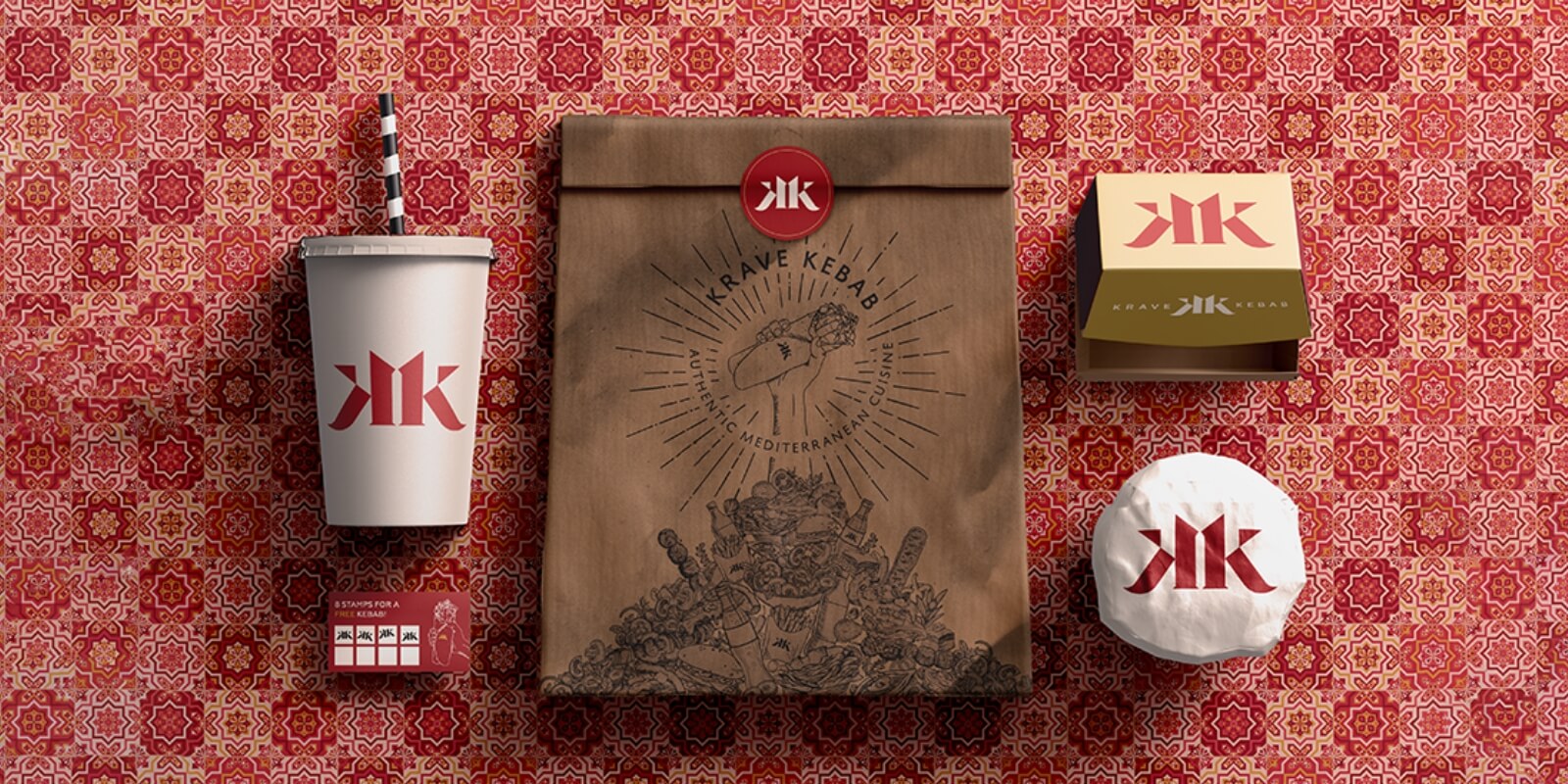
If you’re selling a physical product, the packaging is a key element in your branding design.
Product packaging design includes elements such as:
Even though you need your product packaging to be as eye-catching as possible, don’t over-design it.
Simple and clear concepts tend to have the most success in the marketplace.
Business cards are an often overlooked aspect of designing a brand identity.
When you give clients and customers your business card, it should reinforce your brand identity.
A simple design with your logo on one side and details on the other is usually effective.
There are many DIY services online for designing business cards. But most of them produce cards that look cheap and unprofessional.
It is advisable to pay for professional business cards as part of your branding.
Did you know that there are 1.111 billion consumer emails sent and received each day?
In branding, this means that email offers a great opportunity to promote your brand identity.
Every time employees send emails, you want it to project a positive image of your brand.
It's a good idea to have email templates that include branding elements.
Your business emails should include these elements:
To ensure that your brand design assets are used in the right way, it’s advisable to design a brand style guide.
A brand style guide is a document that outlines your design assets and how to use them. This ensures that all your marketing materials are cohesive and consistent.
Your brand should send a consistent message and image across all platforms. Whether on Facebook, TV adverts, or your employees’ branded uniform, the message should be consistent.
Without a style guide, you run the risk of having consistency issues that confuse your audience. Inconsistencies in your branding make the brand untrustworthy and unprofessional.
In designing your brand identity, there are some common mistakes that you should avoid. Here are some of them:
Mixed messages: Have a clear understanding of the message you want to send. This will help you in choosing the right colours and images.
Copying competitors: Your competitors might have found the magic formula for branding. But that doesn’t mean you should copy them. Your brand identity is meant to help you stand out, not blend in with the competition. Take what works into account and create a unique brand identity.
Inconsistency between online and offline: Although print and online marketing materials have a different feel, they should still have the same brand identity. Make sure that your logo, colours, type, theme and message are consistent.
Like any other aspect of marketing, it is important to track the key performance metrics to determine what works and what doesn’t.
You can use tools such as Google Analytics, social media discussions and market surveys to track branding efforts.
Implement the necessary changes with time to improve your brand identity.
Remember, a memorable brand identity isn’t built in a day. It takes a lot of hard work, creativity and time to have a unique, memorable brand identity.
A strong and positive brand identity ultimately translates into more business revenue.
This is why it makes sense to hire professionals to craft your brand identity.
Red Kite Design is skilled and experienced in creating brand identities that are designed to make your business shine.
A design studio based in Brisbane, Australia, Red Kite Design specialises in logo and identity design. Our team will ensure that your brand will stand out against the competition.
Don’t wait, get started with a free quote today.
You’re all set to launch your company. But do you have a professional logo for your business?
Before you start designing business cards, you need a logo.
A high-quality logo is a vital part of any business brand. Your logo design helps to communicate your brand identity, differentiate you from competitors, and enhance customer loyalty.
Because of how important it is, you can’t afford to have a poor logo design. Avoid free logo platforms online and work with an experienced designer.
To get the best high-resolution and high-quality logo design for your business, you should discuss your needs and expectations with the designer.
With that in mind, here are six important points to discuss with your logo designer:
Your logo design should be fully capable of representing your brand.
Every element on your custom logo should align with your business’ core values.
Before the logo maker starts the process, make sure your designer has insight into the nature of your business.
The perfect logo for your company is largely determined by your industry, what you provide or make and your company name.
Companies that deal in wellness products tend to go for green-coloured logos. This is because green is associated with health and restoration.
Similarly, fast food outlets tend to go for yellow and red logos. These colours capture attention and are also thought to stimulate hunger.
When discussing the nature of your business with the designer, make sure to include these factors:
There are different types of logos to choose from. Although a good logo maker will guide you on what works best for your brand, it is good to have an idea on what you want.
Here are several kinds of logos to choose from:
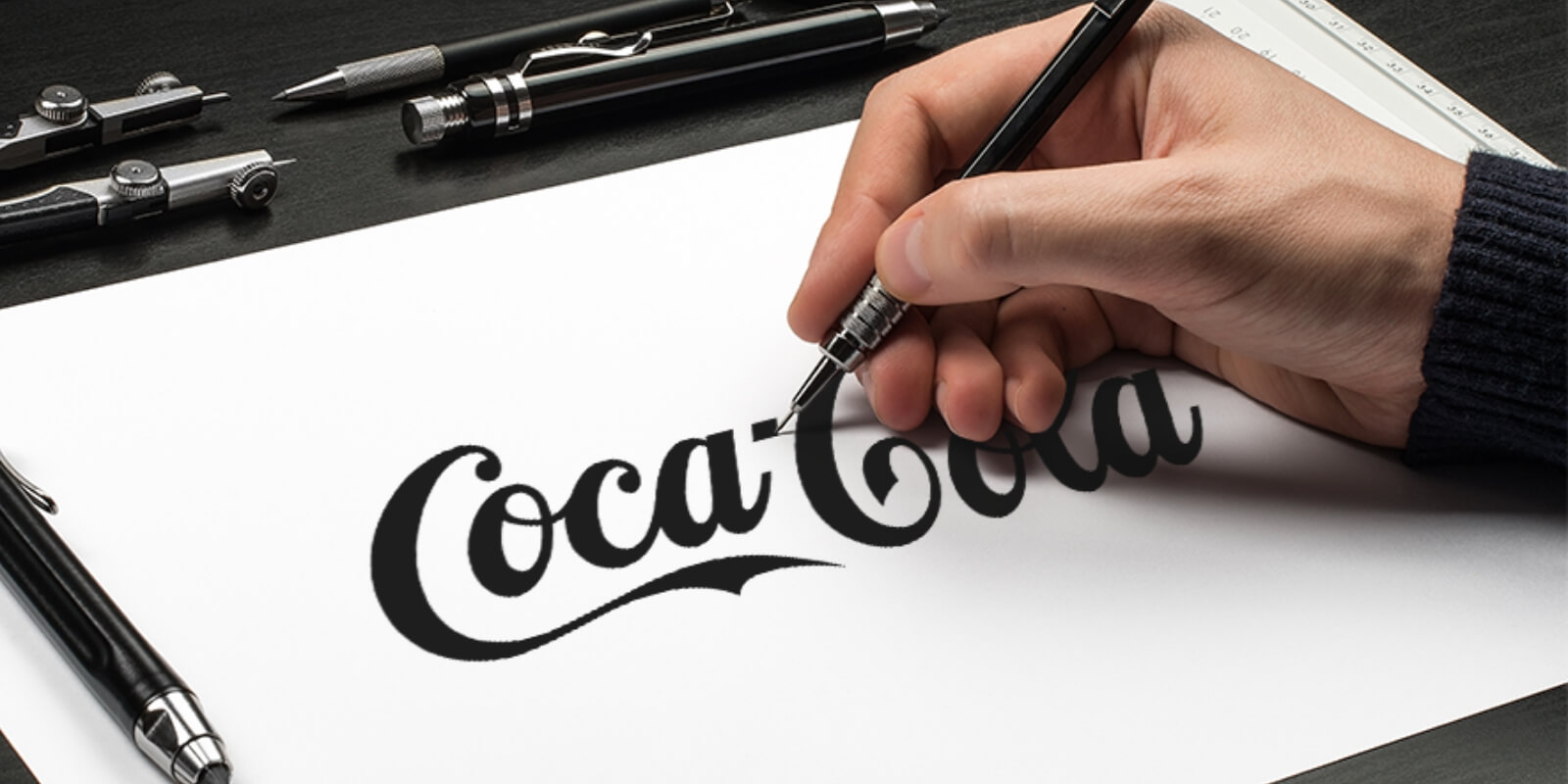
A logotype is the kind of logo that has the company name.
A logotype is a powerful way of advertising your business with just a logo. It’s advisable for small companies with no advertising budget to go for logotypes.
Famous logotypes include the logos of Coca-Cola, CNN, Google, IBM, and RayBan.
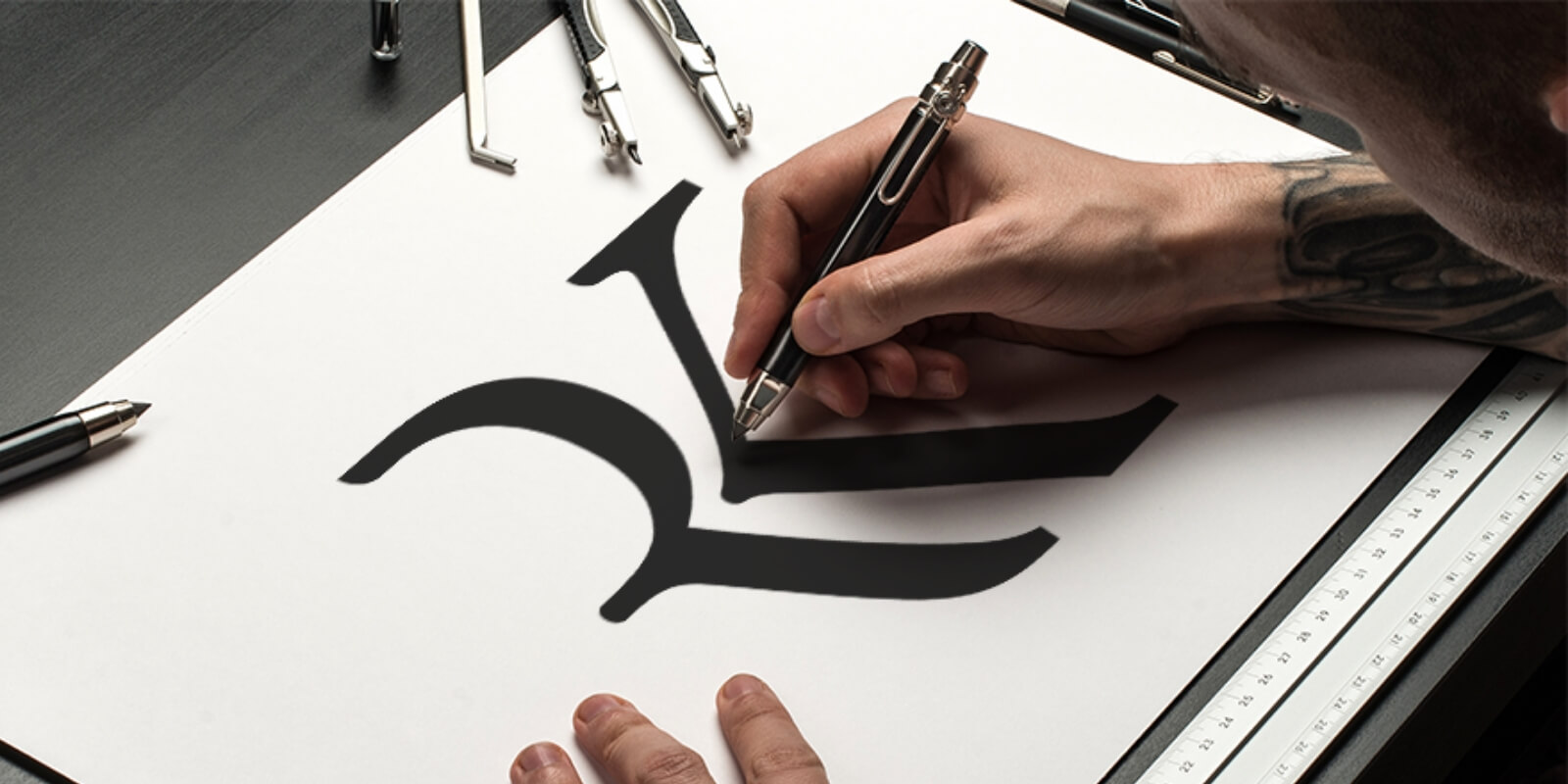
You might also want to go for a letterform logo which consists of the first letter of your brand name.
Companies with famous letterform logo designs include McDonald’s, Honda, Beats and Unilever.
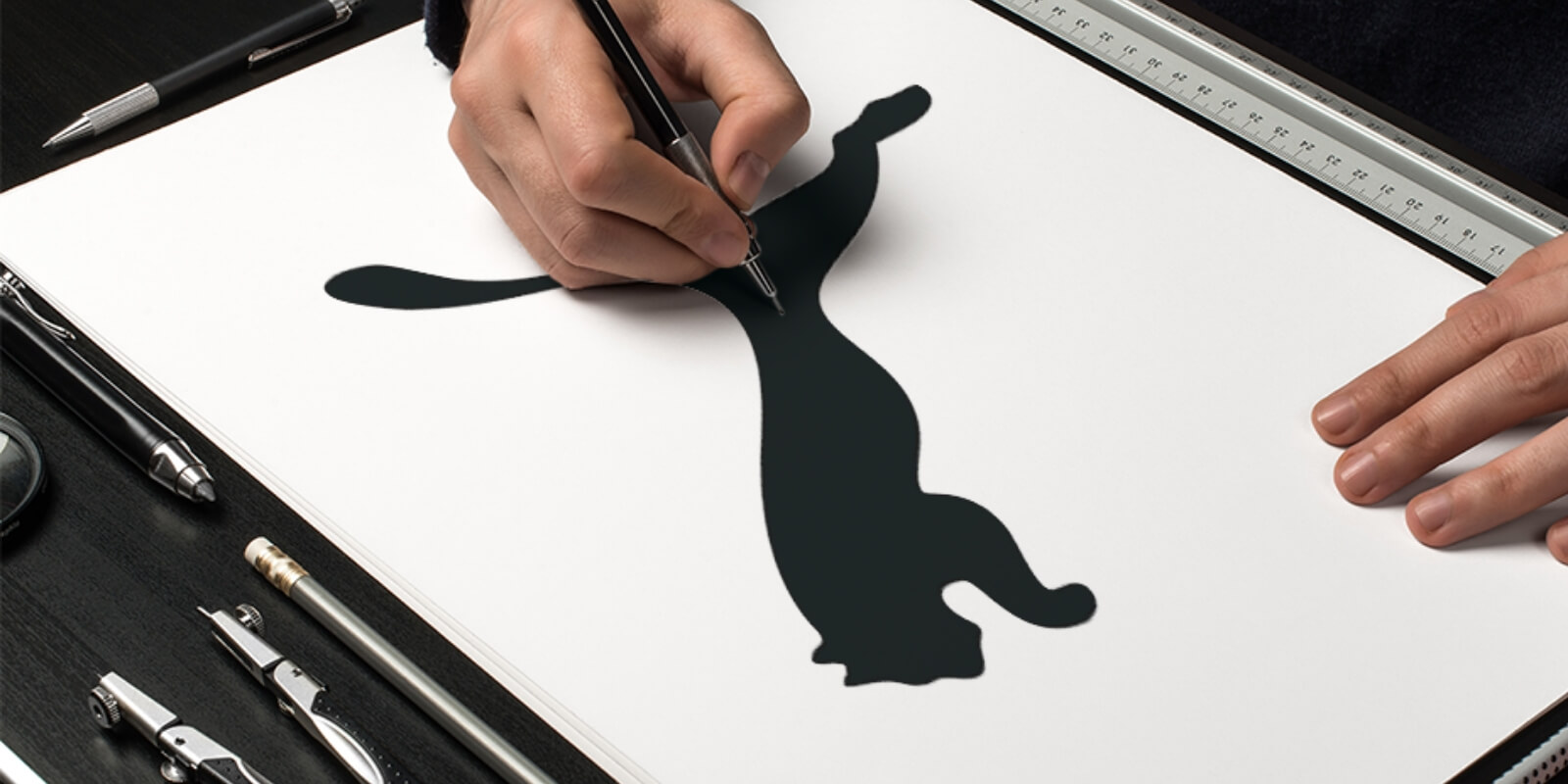
Do you want a certain image or symbol as your business logo? This might mean spending more on creating awareness about your brand name.
But once a symbol is widely known, it becomes a powerful visual cue for the audience.
A pictorial logo can be easily incorporated into a wide range of marketing materials. It looks great as a website thumbnail, on your social media, as well as on business cards.
Pictorial logos include Apple’ bitten apple, Twitter’s blue bird and Starbucks’ siren.
Pictorial business logos are not advisable for new or small businesses.
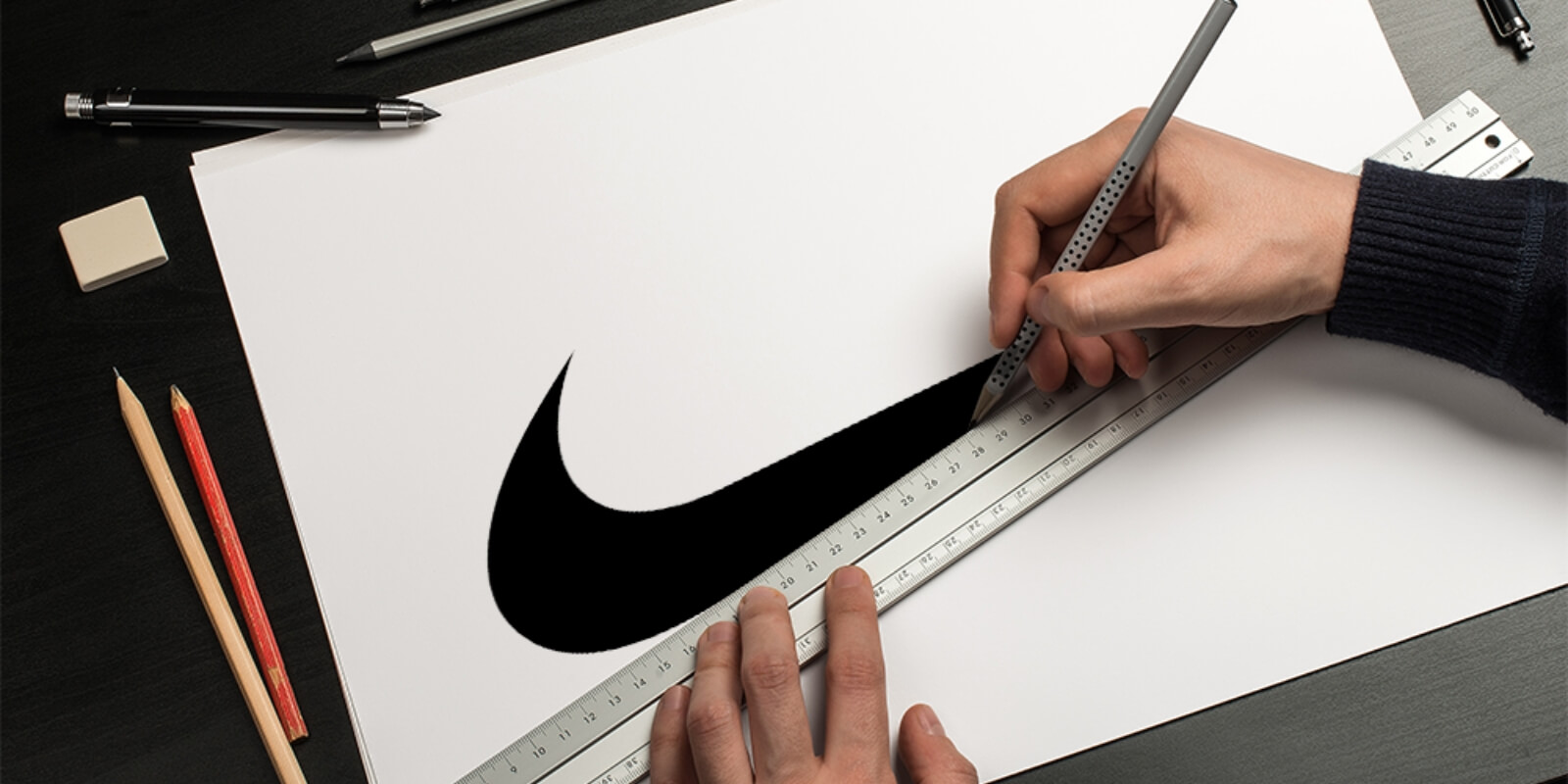
Instead of a recognisable image, an abstract logo is an abstract geometric form.
Examples of abstract logos include Pepsi’s divided circle, BP’s starburst logo design and Adidas’ trefoil.
Abstract logos allow for the creation of something truly unique to represent your brand.
Through clever use of colour and form, you can communicate your message effectively. For instance, Nike’s swoosh logo implies movement and freedom.
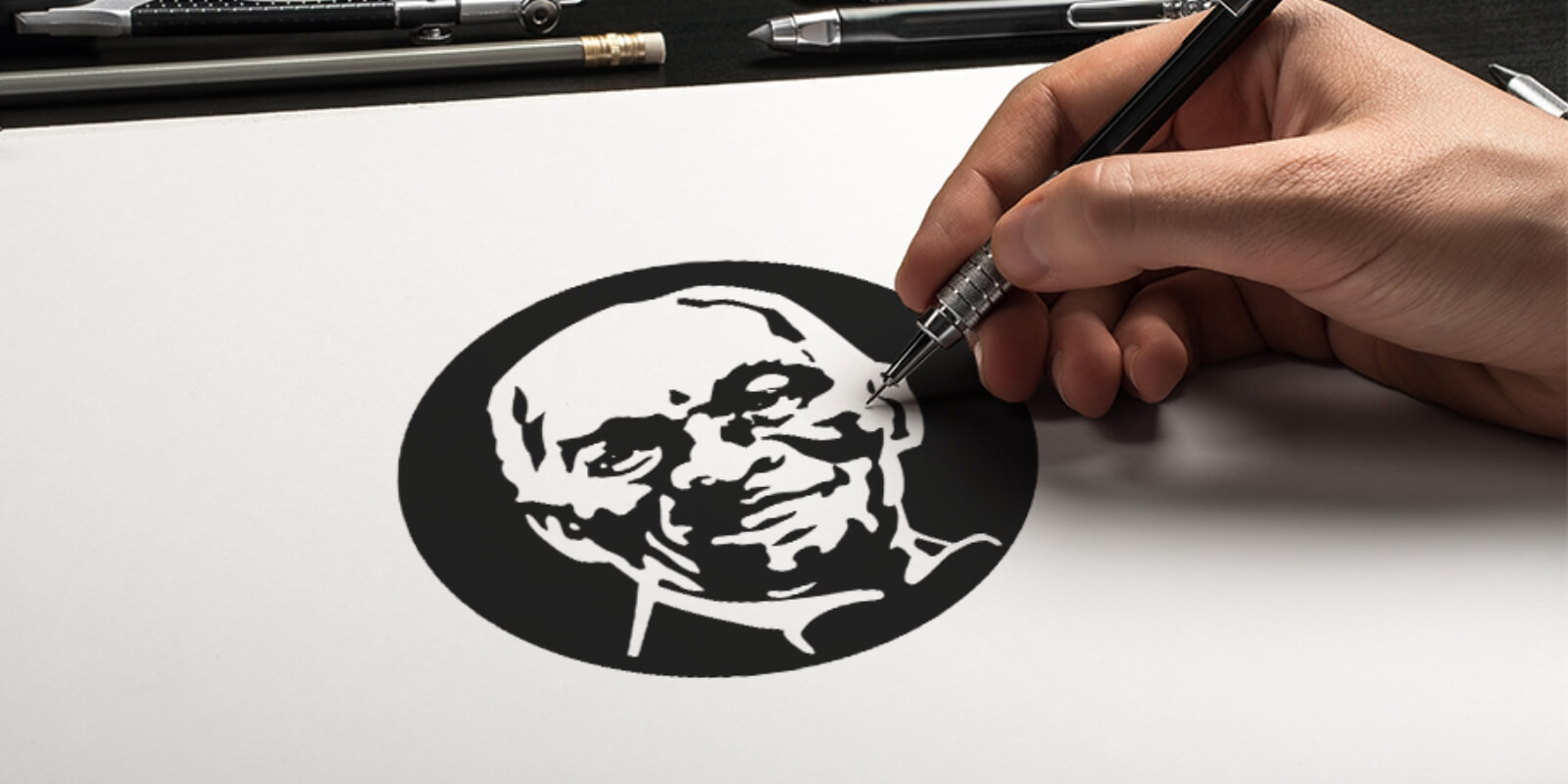
Mascot logos illustrate a character that represents the company.
Mascots are often cartoonish and fun. Think about Kool-Aid Man, Planter’s Mr Peanut and KFC’s Colonel.
Mascots are especially effective for family-oriented companies.
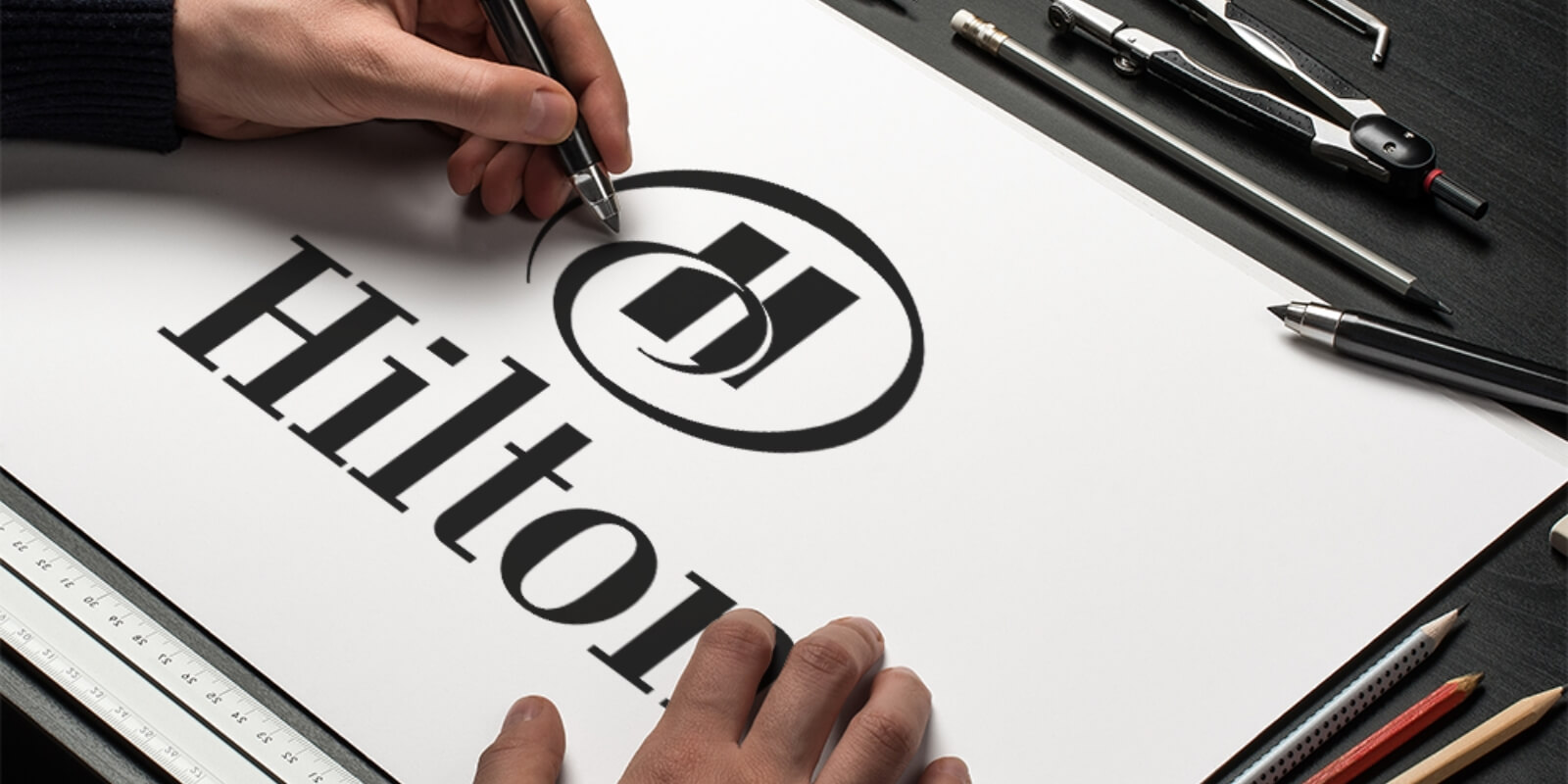
You don’t have to go for one type of logo.
If you like, you can opt for a combination logo with both a symbol and company name.
The symbol and text can run alongside each other, stacked on top of each other, or integrated together into one image.
Famous combination logos include Doritos, Burger King, and Lacoste.
Like with any other business arrangement, it is important to discuss the budget.
Research on how much a high-resolution, custom logo design costs.
Because business logos can range in complexity, logo makers tend to charge varying rates for different logo templates.
Red Kite Design has a value-based pricing approach for both large corporations and small family businesses.
During price discussion, don’t forget to ask what is included in the quoted price for the logo design. The price might include designing business cards, social media files and other logo templates.
Red Kite Design offers a comprehensive logo package that includes:
Note: Beware of cheap services that provide only the basics. You will likely end up paying more for design additions.
Don’t forget to discuss how long the project will take. This will allow you to plan accordingly.

Before you make a decision on the designer to hire, look at their experience.
Peruse their portfolio to get an idea of their work quality. It’s also a good idea to read client testimonials and talk to references.
Because designers have different design processes, understanding your designer's unique process is recommended.
Note: Beware of free logo software and some freelance designers who are unable to provide portfolios. When it comes to the face of your brand you want to partner with a professional.
Because a business logo is the face of the brand, don’t just go for the first logo maker you can find.
Instead, find experienced professional logo designers for a high quality logo design.
This is where Red Kite Design comes in!
Red Kite Design is a specialist identity design agency based in Brisbane. We offer a full spectrum of identity and graphic design services - including designing high-resolution logos.
A unique, high-resolution logo will go a long way in giving your business a competitive edge.
To get started ASAP, contact Red Kite Design’s creative team for a free logo quotation.
Photo by: printscanada.com
When you’re setting up a business, creating a perfect logo might not seem like a top priority.
“Why do I even need to create a logo?” you might find yourself wondering.
When you’re rebranding, you might also feel like investing in a new business logo isn’t all that important.
However, a logo is not inconsequential. It is a small but vital part of any successful business.
Just think about it.
Have you ever realised that you can instantly identify certain companies from their logo, even if their name isn’t part of the logo?
You can immediately recognise Nike’s "swoosh" symbol, Starbucks' twin-tailed mermaid or siren, and Apple’s bitten apple.
In many instances, you can correctly guess the nature of a company’s business from its logo.
A logo is a symbol that succinctly communicates information about your business. It is often the first thing that a customer will notice about your business. Think of a logo as the face of a company.
Therefore, a custom logo is a crucial part of any business brand. It makes a significant impact on a company’s public recognition and perception.
For these reasons, a custom logo is one of the most important branding investments for any business.
With that said, let’s delve deeper into five important reasons why your business logo matters:
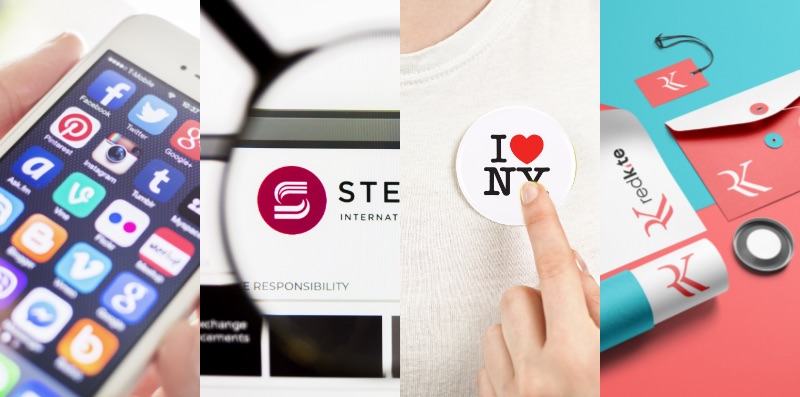
The term branding has been used to describe the process of marking something as belonging to someone or something. The practice has been in place since at least 4000 BCE. Egyptian funeral monuments depict branded cattle.
Your business logo does the same. You emblazon your brand’s logo on your products, business cards, website, and social media as a mark of ownership.
It communicates to the world who you are, the type of products or services you offer. Furthermore, a logo helps distinguish you from your competitors in the crowded marketplace.
Simply put, a logo is one of the strongest branding tools for a business. For this reason, the most powerful logos have simple but memorable designs.
Some of the most successful logos are so recognisable that you can look at them and immediately understand what the brand is about.

For instance, McDonald's golden arches are reminiscent of French fries.
It is little wonder that McDonald’s logo is the most recognisable image in the world! That is according to a 2010 survey by Sponsorship Research International.
The world’s top brands have learned how to capitalise marketing by using their logos. In almost every part of the world, people can recognise Coca-Cola, Mercedes-Benz, Nike and Apple logos.
When creating a logo for your company, go for a simple design. The design should strongly convey the core of your business and its values.
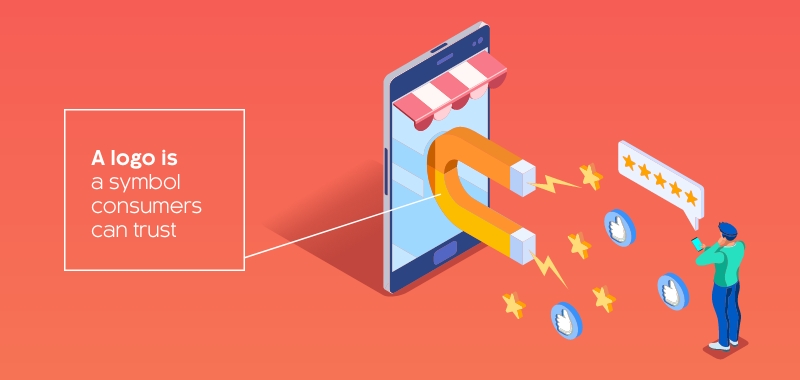
The red sole of a Christian Louboutin pump distinguishes these classic shoes. The shoes have become a global symbol of luxury and elegance.
The red-bottomed pumps cost hundreds and sometimes thousands of dollars.
But you probably wouldn’t be willing to pay the same amount of money for a similarly designed shoe from an unknown brand.
When you buy a pair of Christian Louboutin shoes, you’re not just buying shoes but the brand.
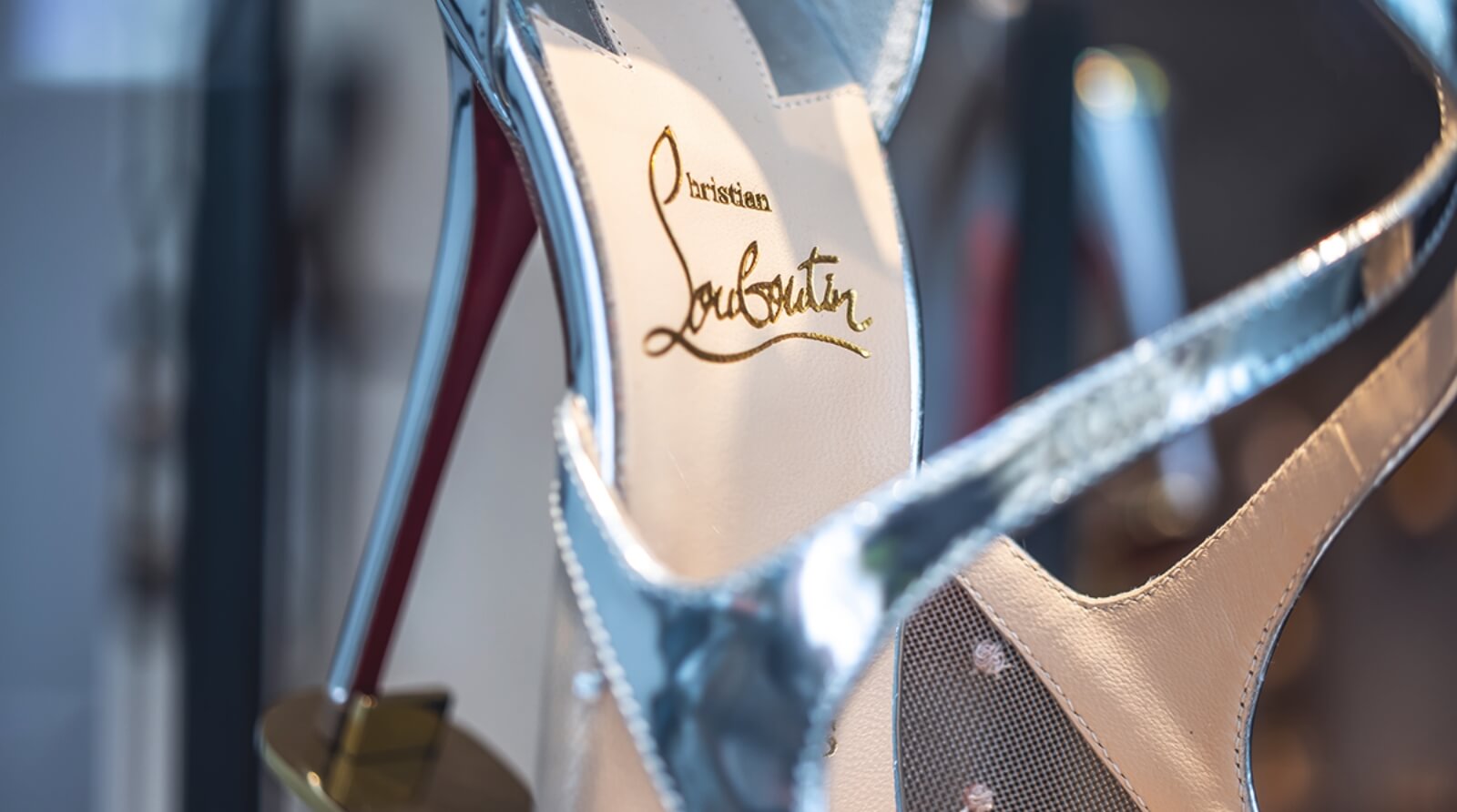
When consumers love a particular brand, its logo design becomes a crucial part of brand loyalty. After all, it is the visual representation of everything a brand stands for.
This doesn’t only apply to fashion - it is true of every industry. Your loyal consumers will come to associate your logo with the values your brand stands for.
Even if they forget your company name, they’re likely to remember the logo design. Visual cues are easier to recall which boosts their loyalty to your brand.
Once you have established trust with consumers, they will seek you out. Your brand’s logo design will help them find you.

A custom logo design is like a small ad for your business.
You can put your logo design on your company stationery, social media, business cards, billboards, websites, and employee uniforms.
Using your logo design on every advertising opportunity gives your business exposure. This goes a long way in building your brand recognition.
The more people see and interact with your logo, the more they trust the brand. In turn, this will boost your sales, revenue, and profits.
Bear in mind that most people won’t pay full attention to your advertising content. But they might glance at the logo design and immediately grasp your message.
Without a properly designed and displayed high resolution logo, customers might be a little wary of buying what you’re selling.
The lack of a proper high quality logo gives the impression that a business is disorganised, inexperienced, and even untrustworthy.
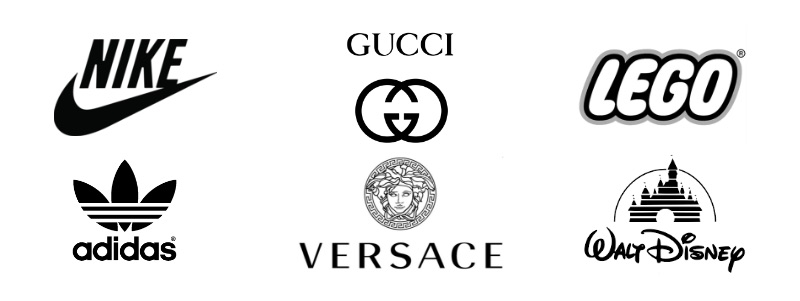
When you’re starting a business with limited funds, paying for a logo design might feel like an unnecessary expenditure.
Similarly, when you’re rebranding, you might be reluctant about spending money on a new logo design.
While you might save money by going for a quick fix or sticking with a poorly-designed logo, it can cost your business in the long run.
Professionally-created logos are usually versatile, meeting the ever-changing marketing demands. Bear in mind that you will need to create a logo that suits different platforms.
An experienced designer ensures that your logo will look good wherever it is applied. Your logo design should remain clear, legible, and consistent wherever you use it.
A logo that was designed for your website should also look good on billboards, stationery and business cards.
A professional logo maker will consider all the potential future pitfalls. This way, they will create a logo design that will stand the test of time.
If you skimp on paying for a professional logo from the get-go, you are likely to end up with a poorly-designed logo.
As your business grows, there’s a good chance that you will need to update the logo. You will have to pay for an expensive rebrand which could have been easily avoided by hiring a professional logo designer at the beginning.
A logo design that doesn’t resonate with your target audience can lead to slower business growth. In the long run, this translates into a loss of potential revenue.
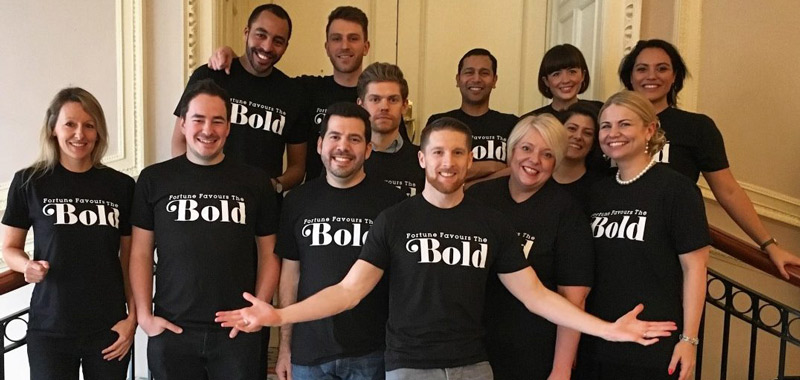
Your unique logo isn’t just for outsiders to gawk at.
Your employees can also draw inspiration from your business logo.
A perfect logo evokes your company’s vision and mission. In this sense, logos remind employees of the bigger collective goal for the company.
Depending on your industry, it is a great idea to give employees branded clothing. When everyone in the team is wearing branded clothes, it boosts team spirit.
Taking pride in associating with the brand is also powerful in promoting productivity and job satisfaction.

Now that you know why you should invest in a high-quality logo, you might be wondering where to get started.
Red Kite Design is a creative studio that specialises in unique, memorable, and industry-appropriate logos.
Whether you have a new business or you’re rebranding an existing one, Red Kite Design will create a high-quality logo that speaks to your target audience.
Red Kite Design also offers full identity design and brand strategy services. This helps businesses create and maintain memorable, appropriate and successful identities.
To give your businesses a competitive edge, get in touch with Red Kite Design’s team for a free quotation.
Photo: goldlevelprint.com